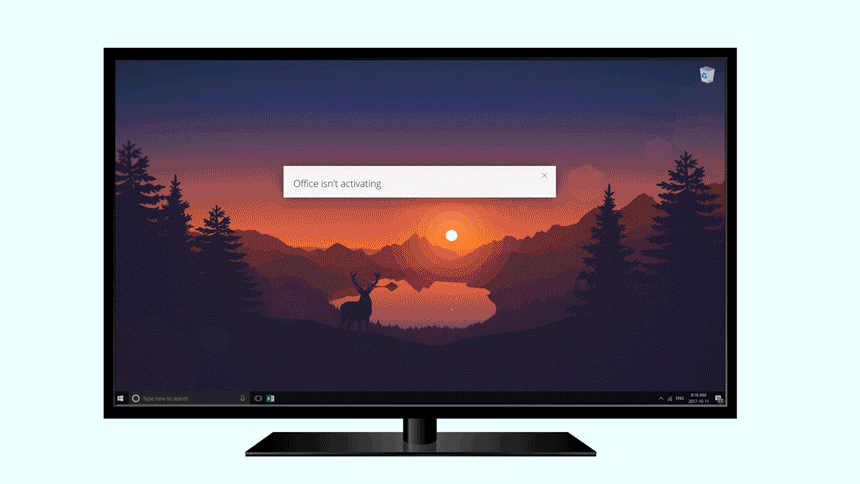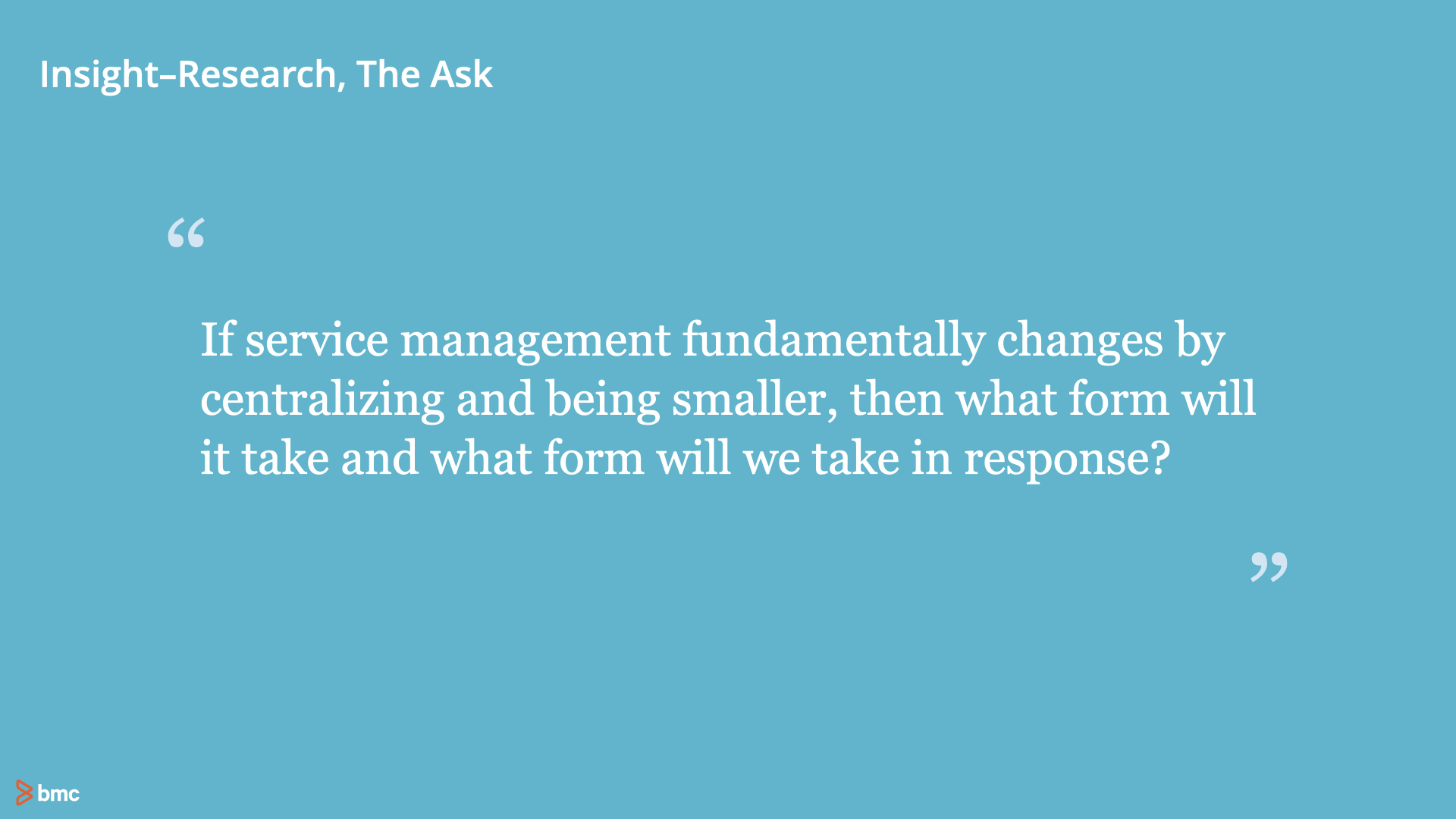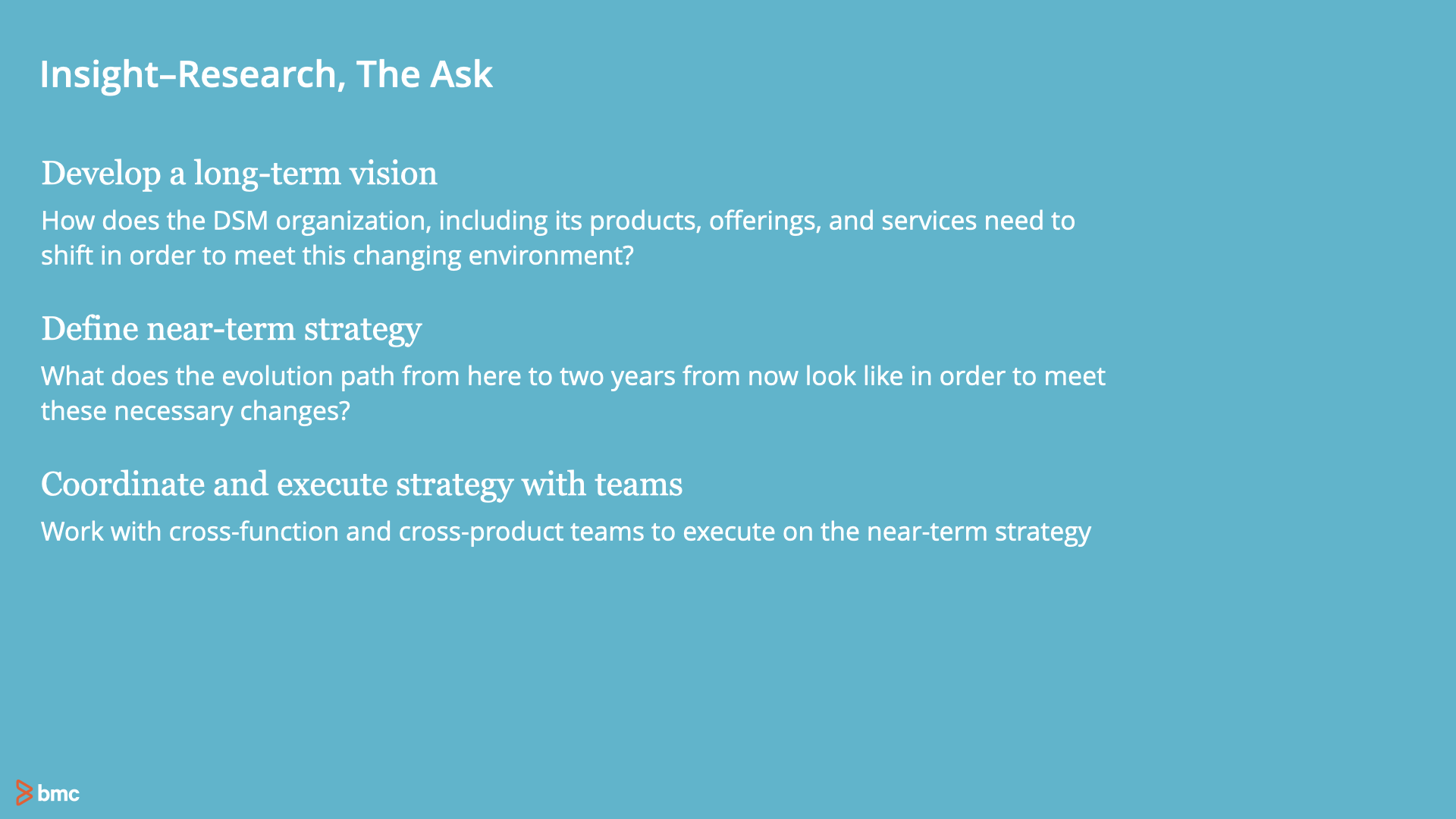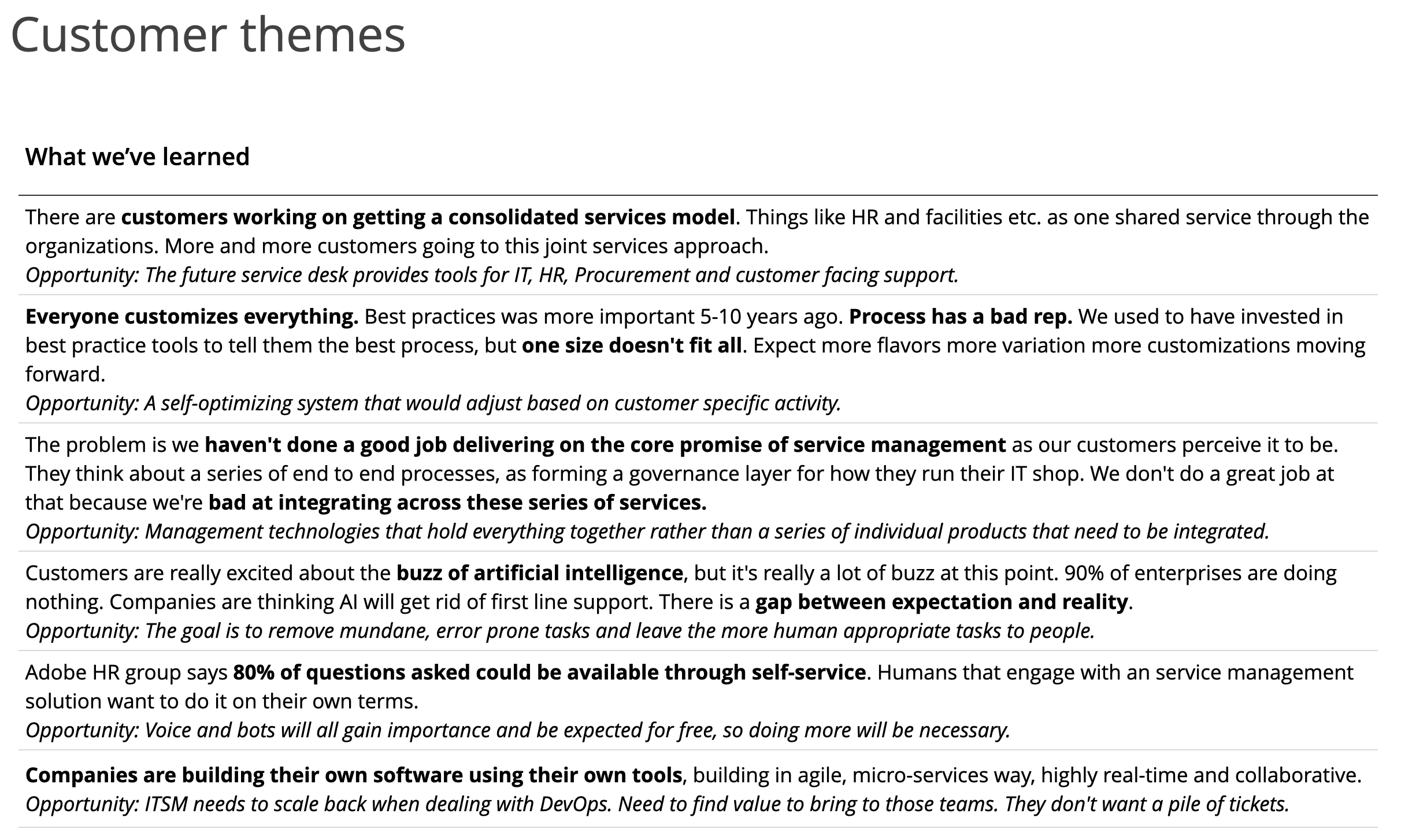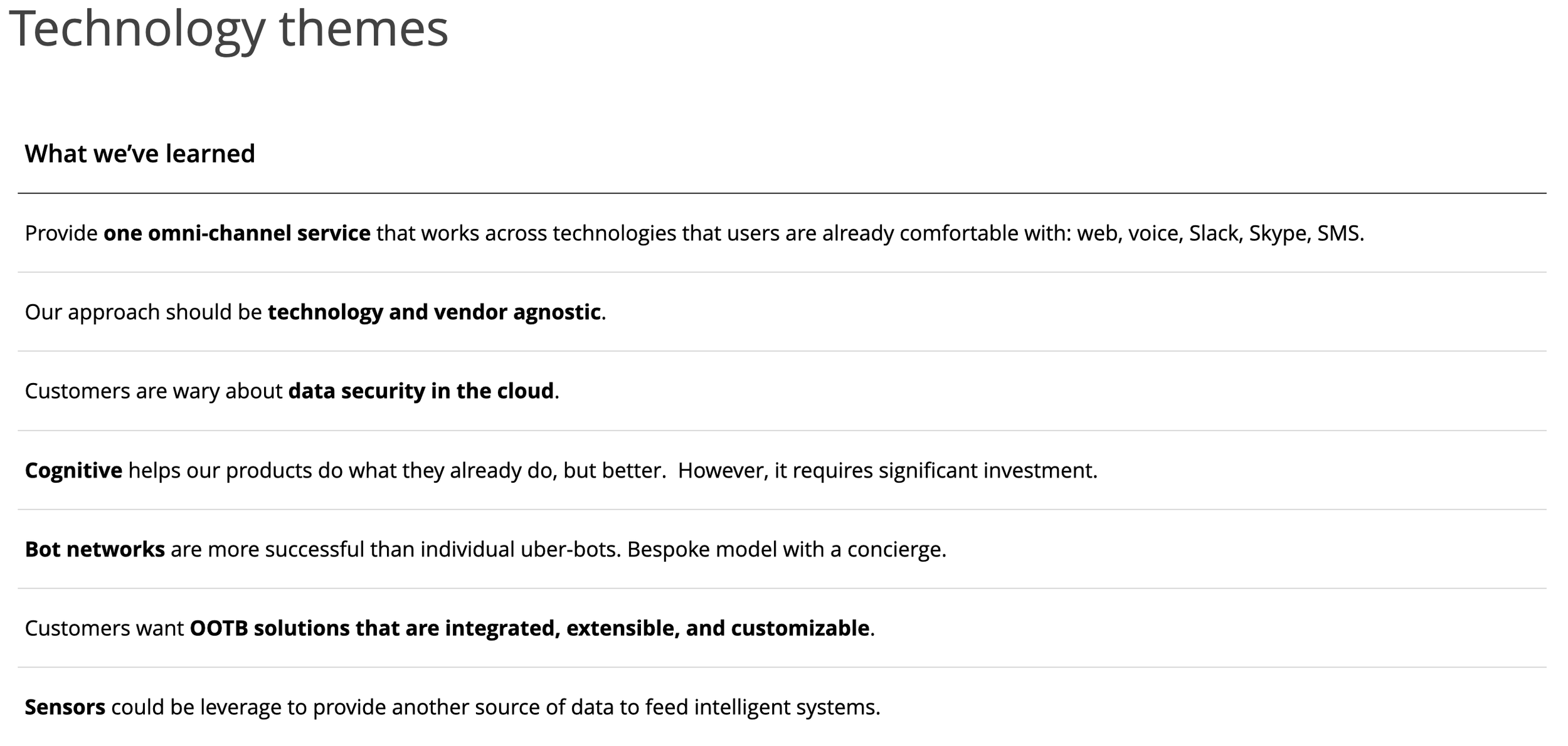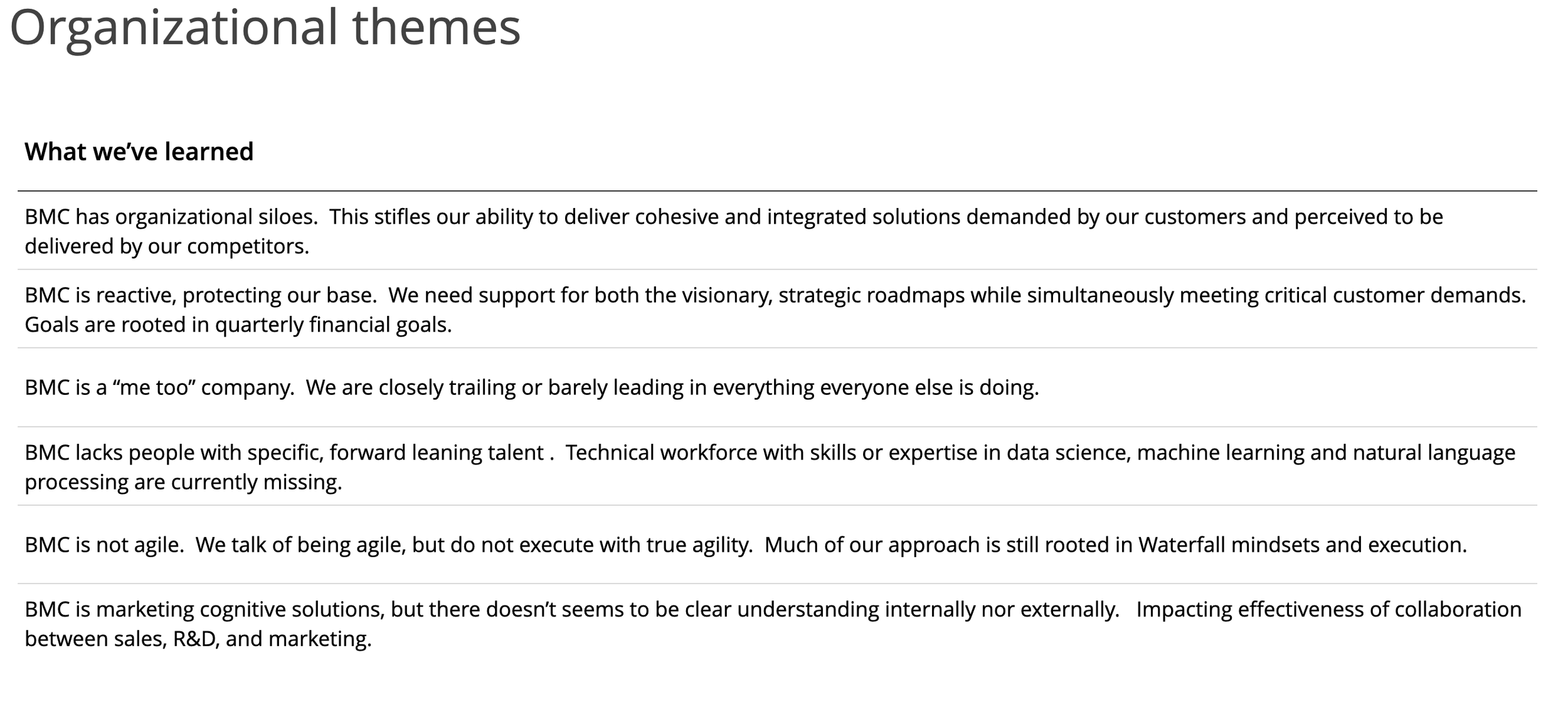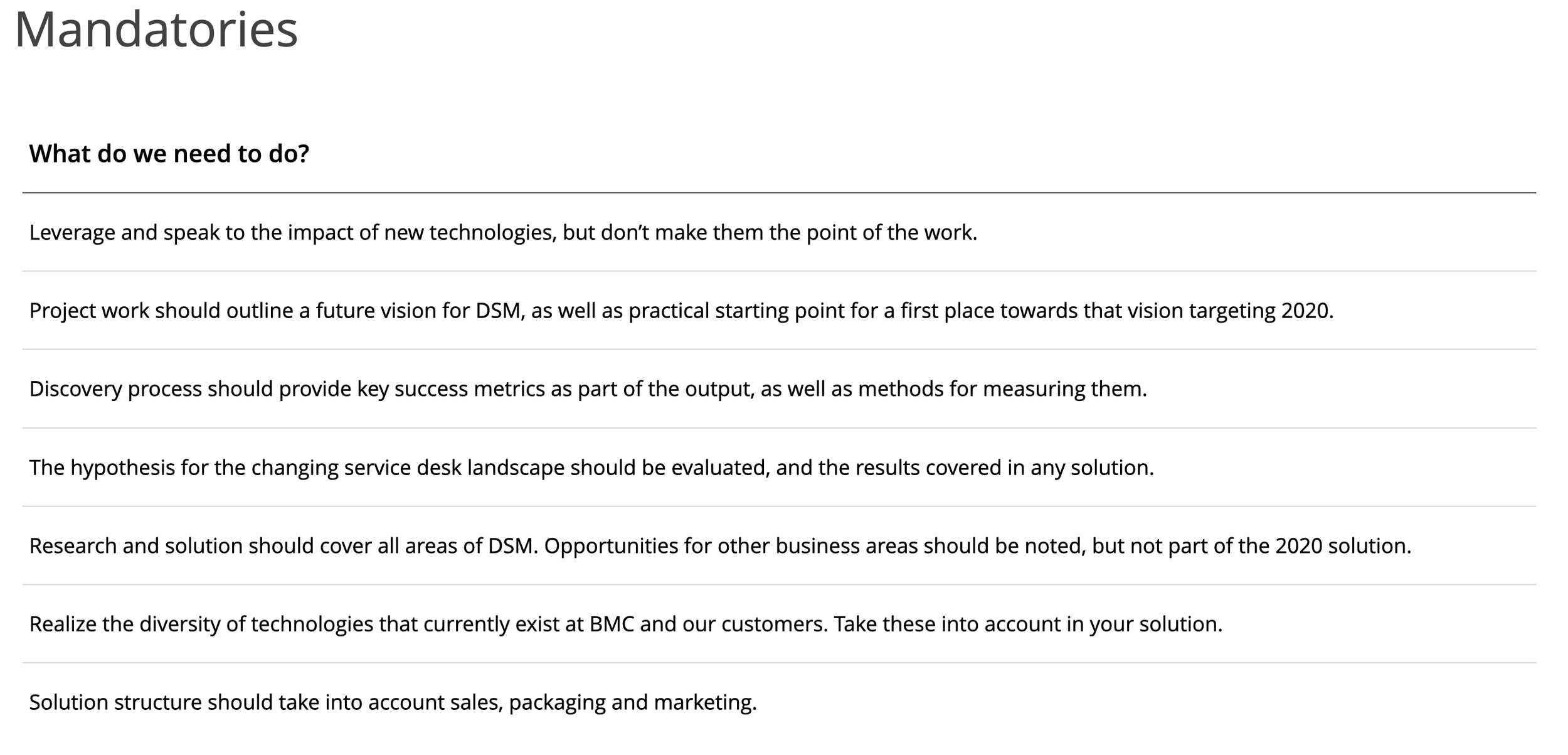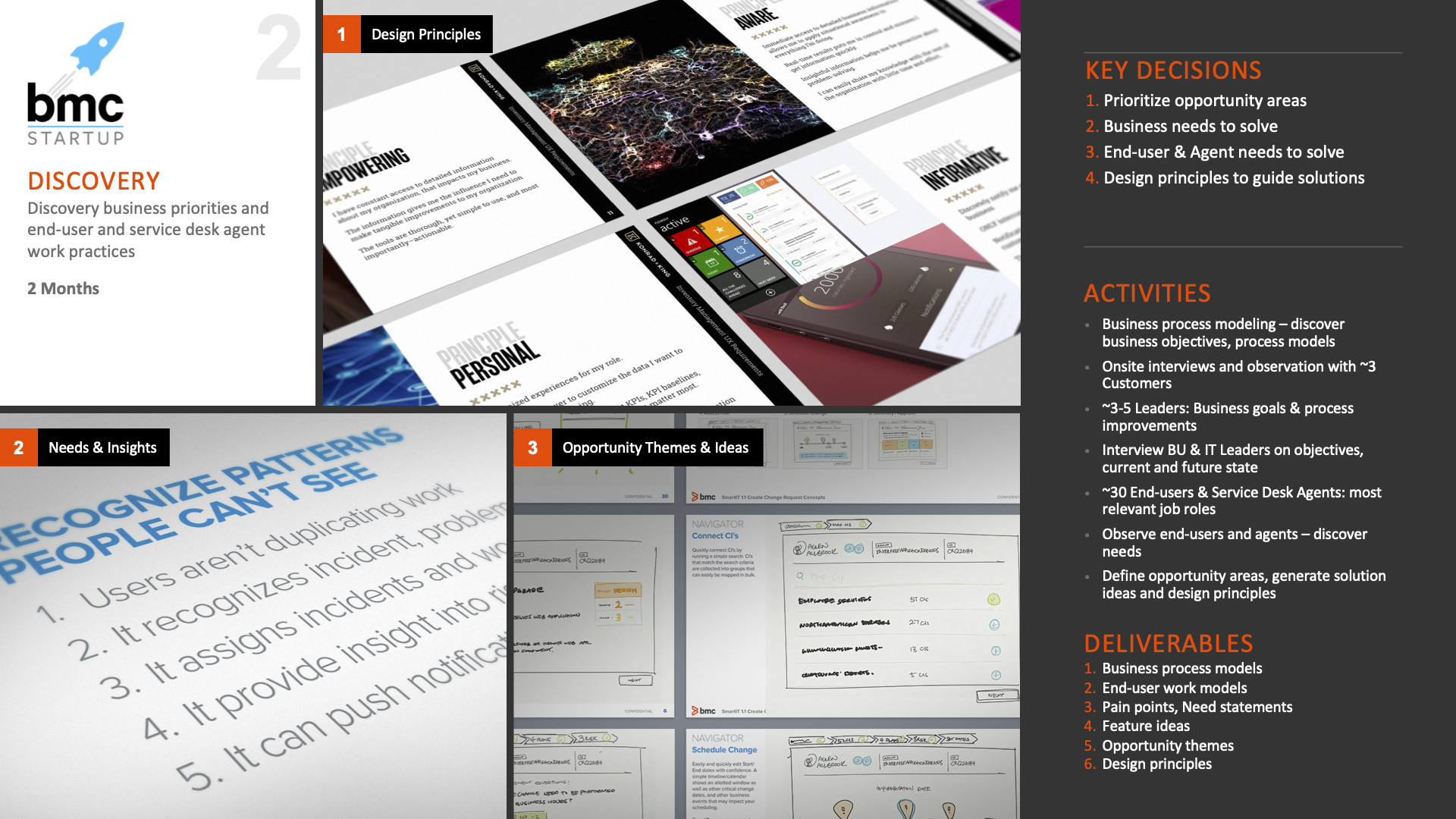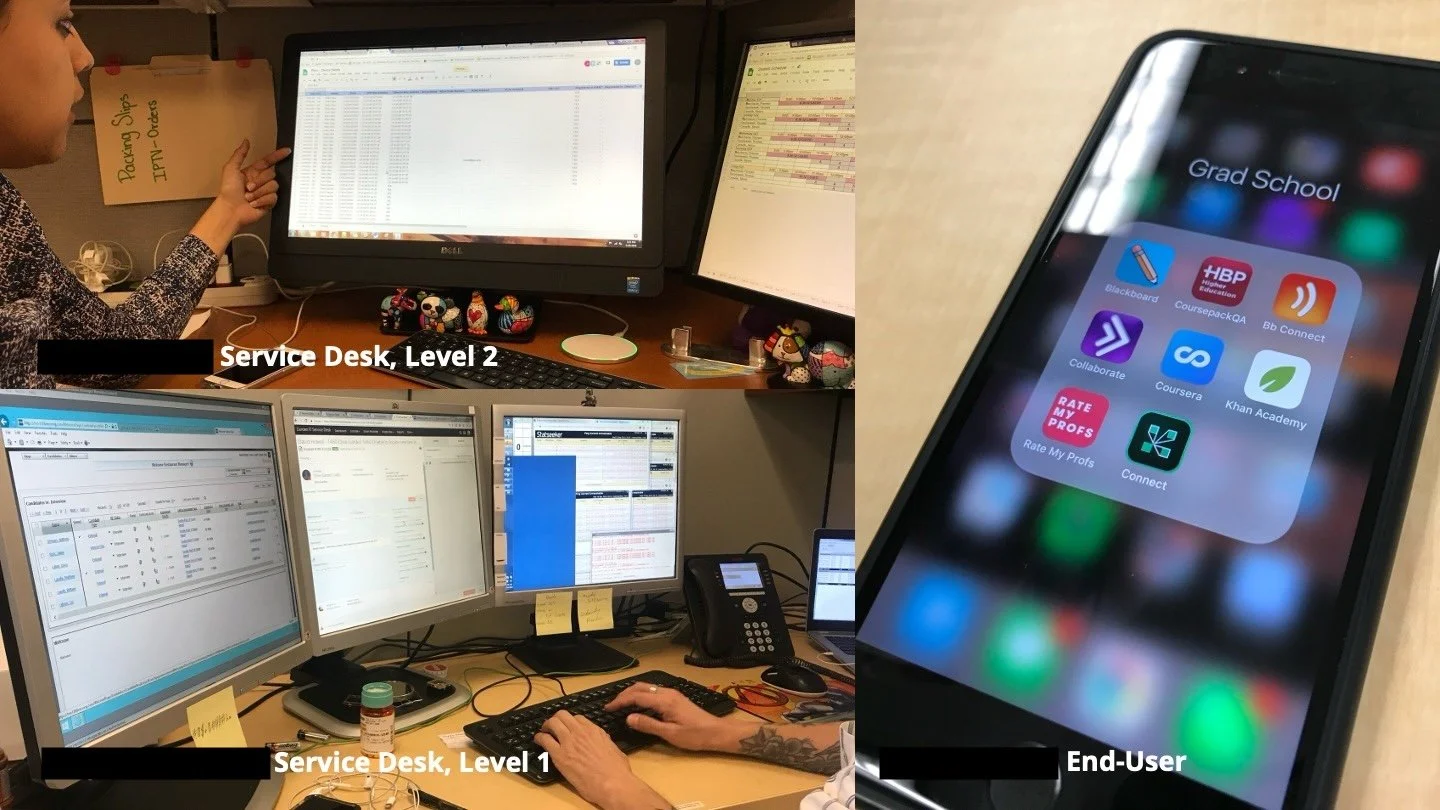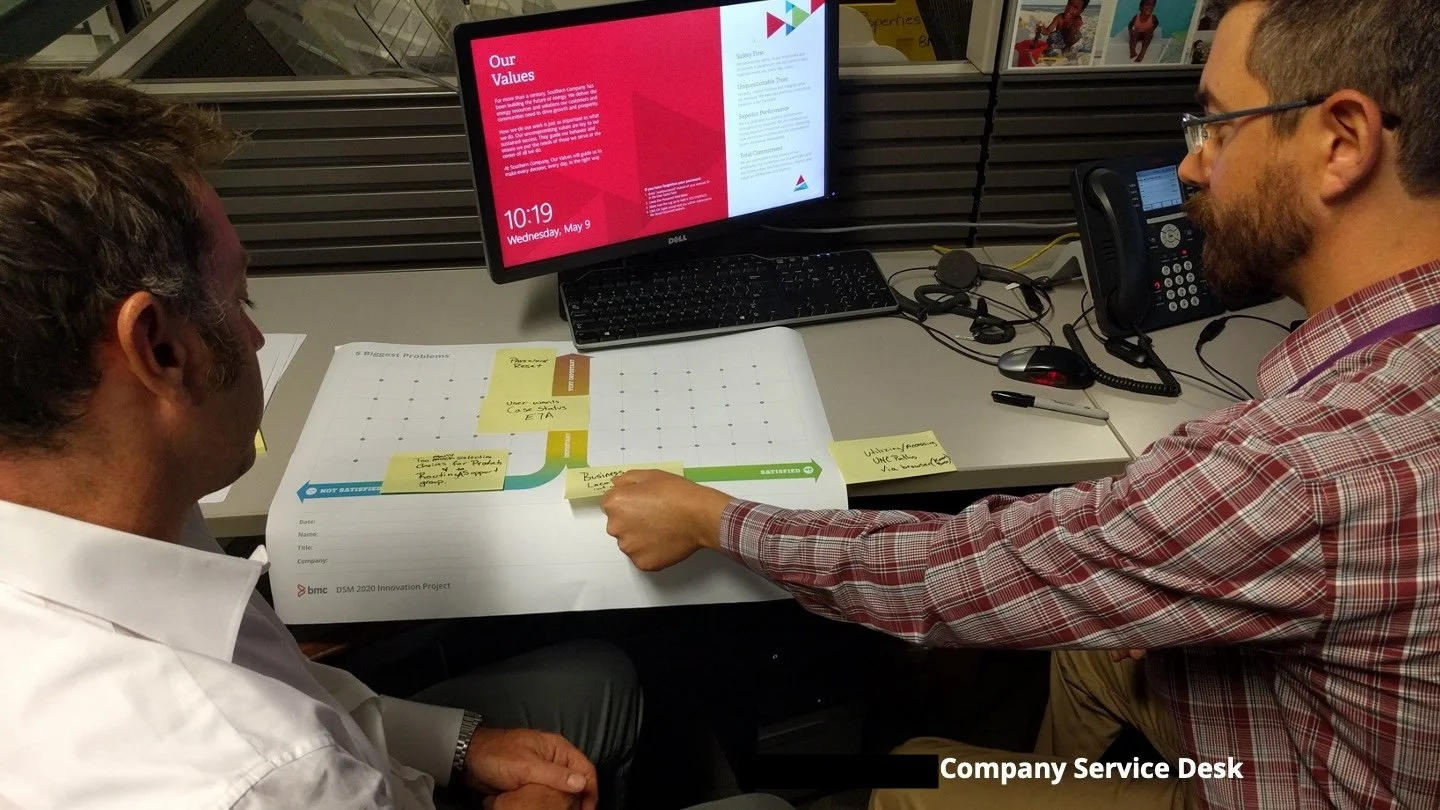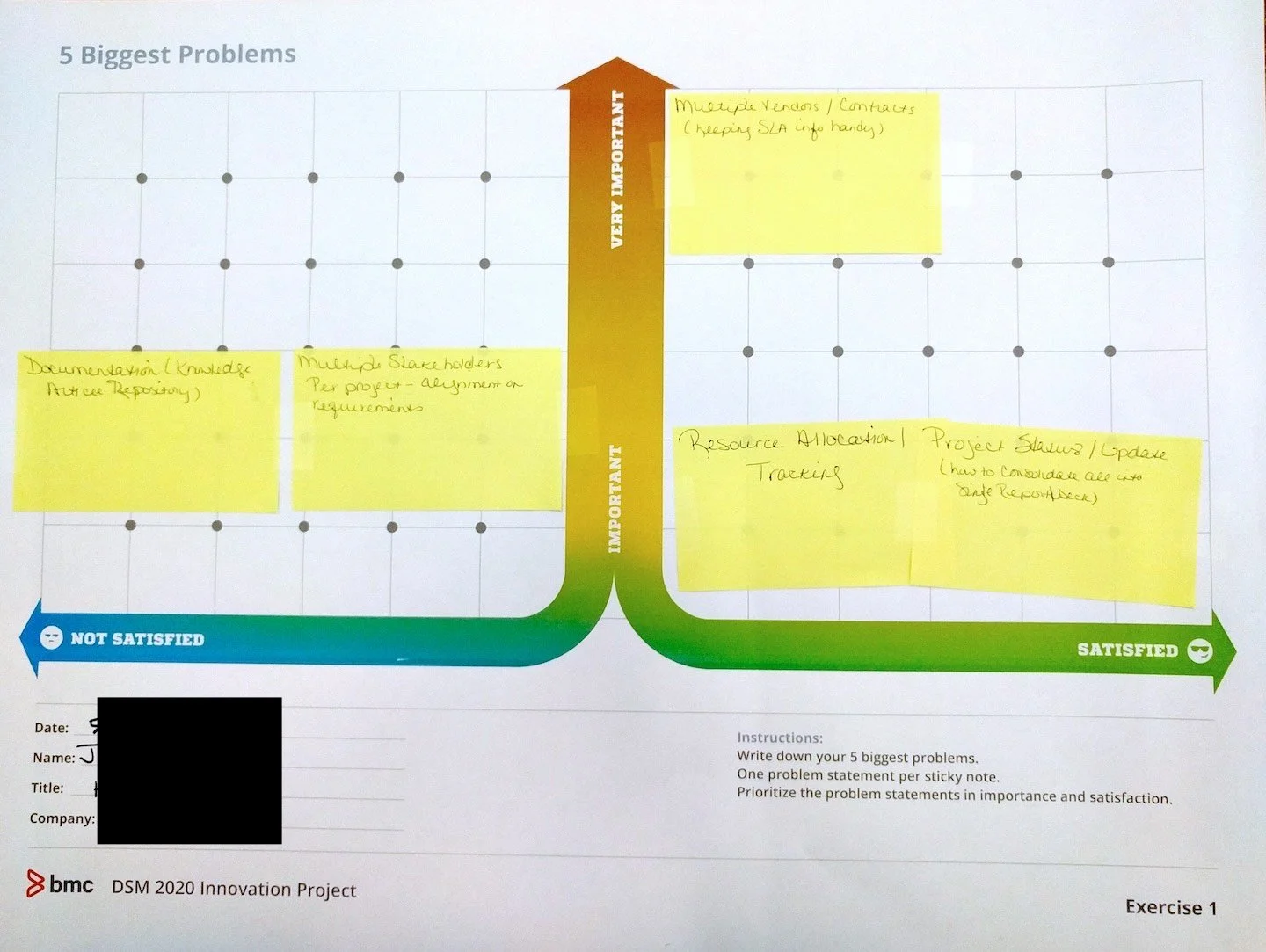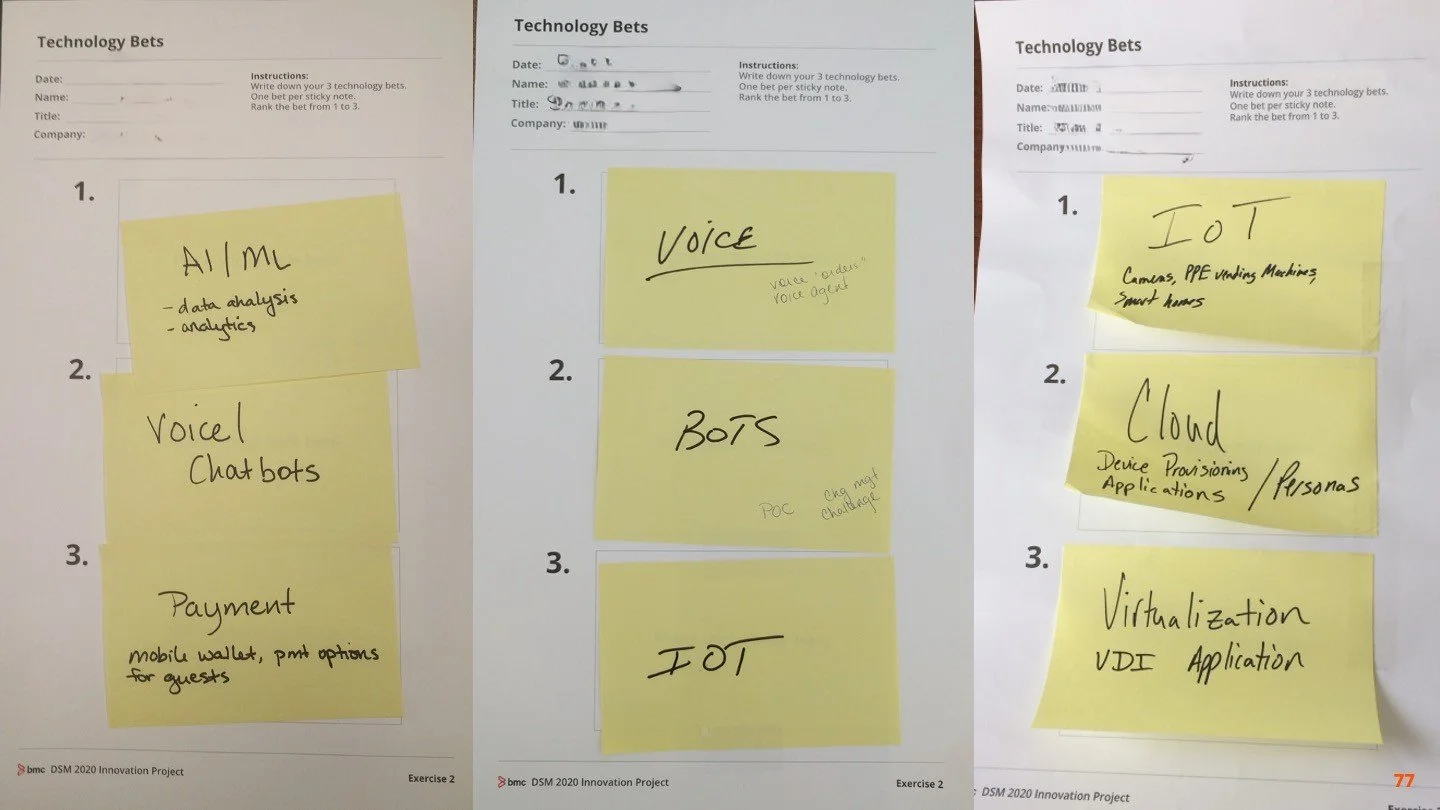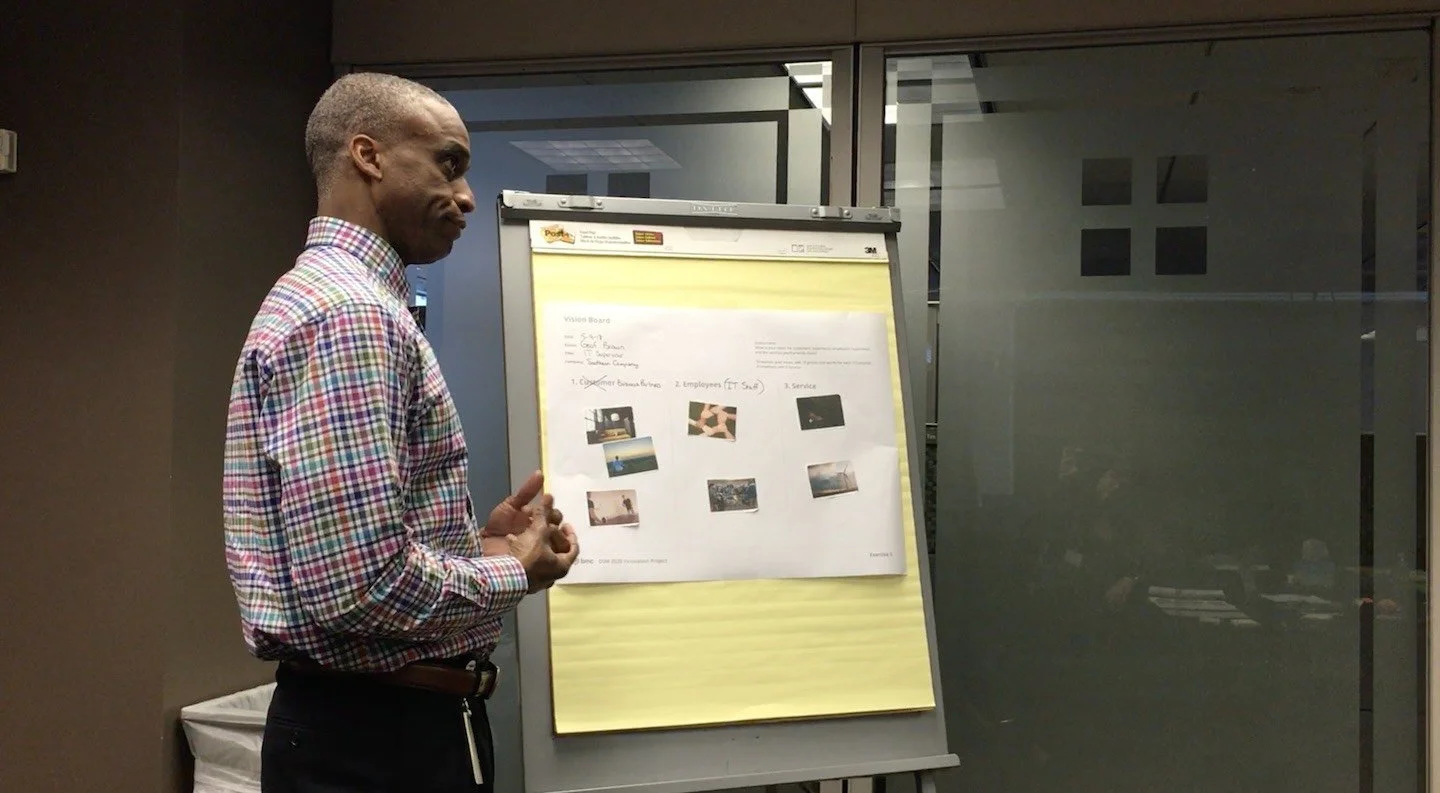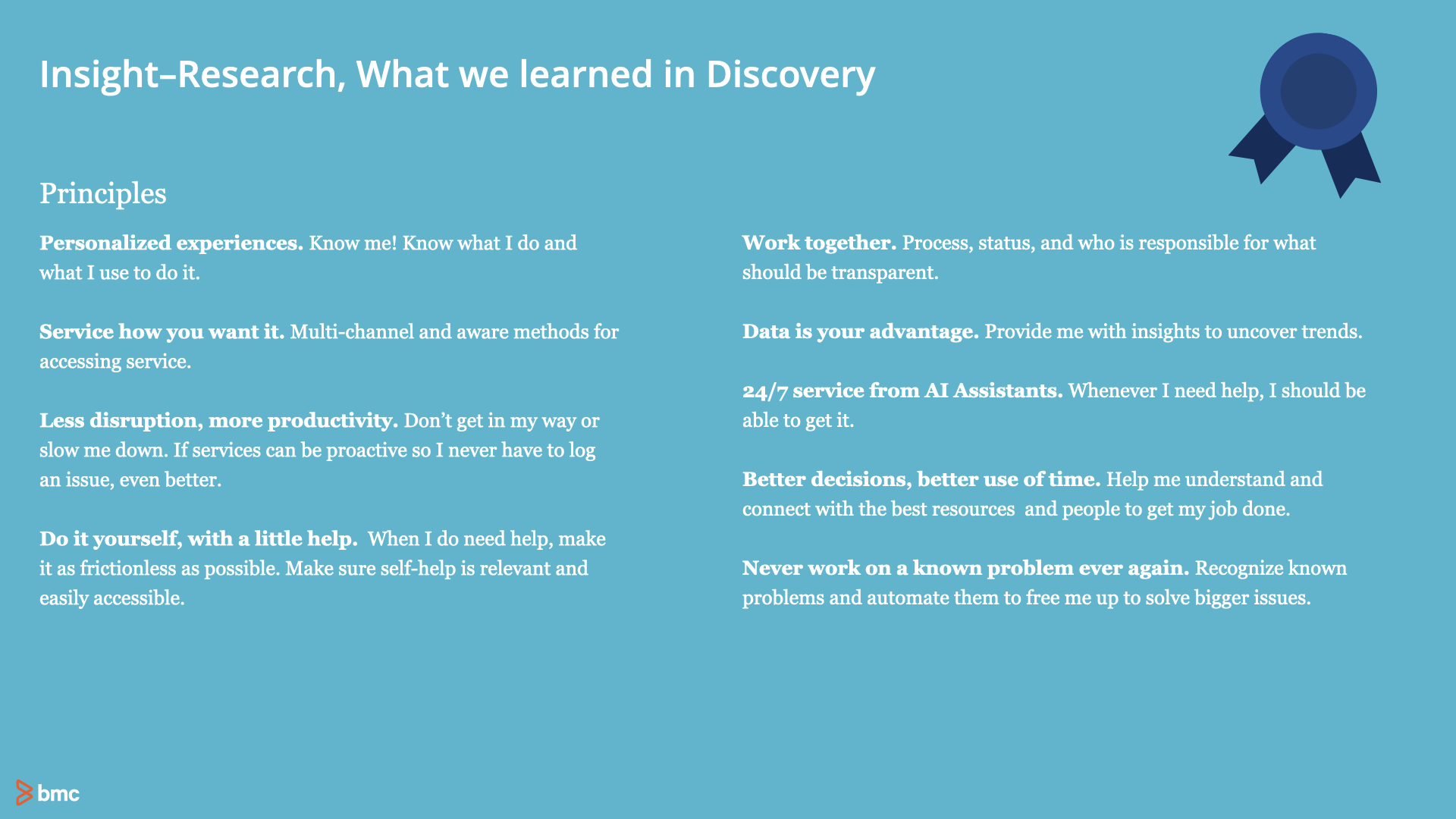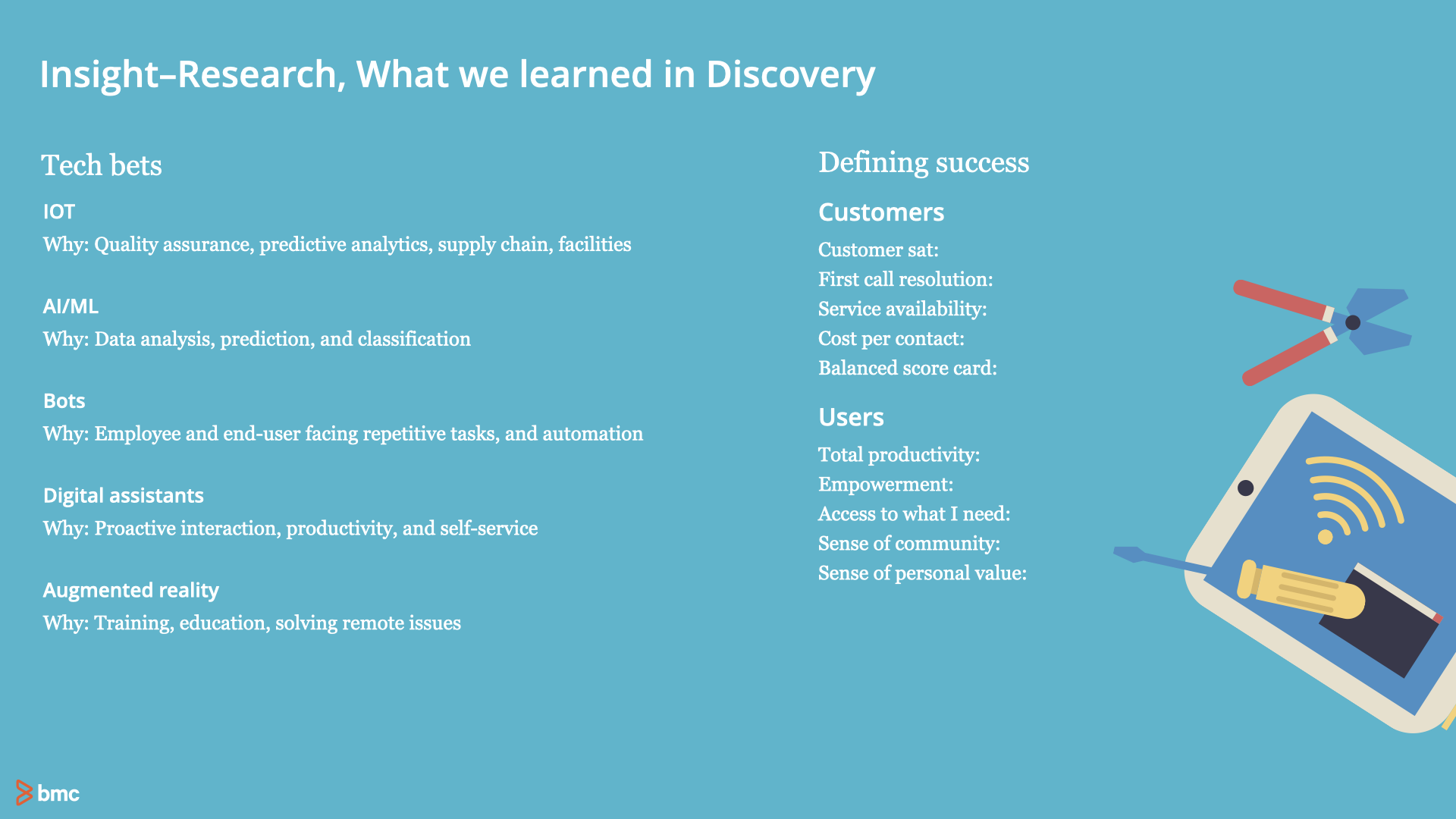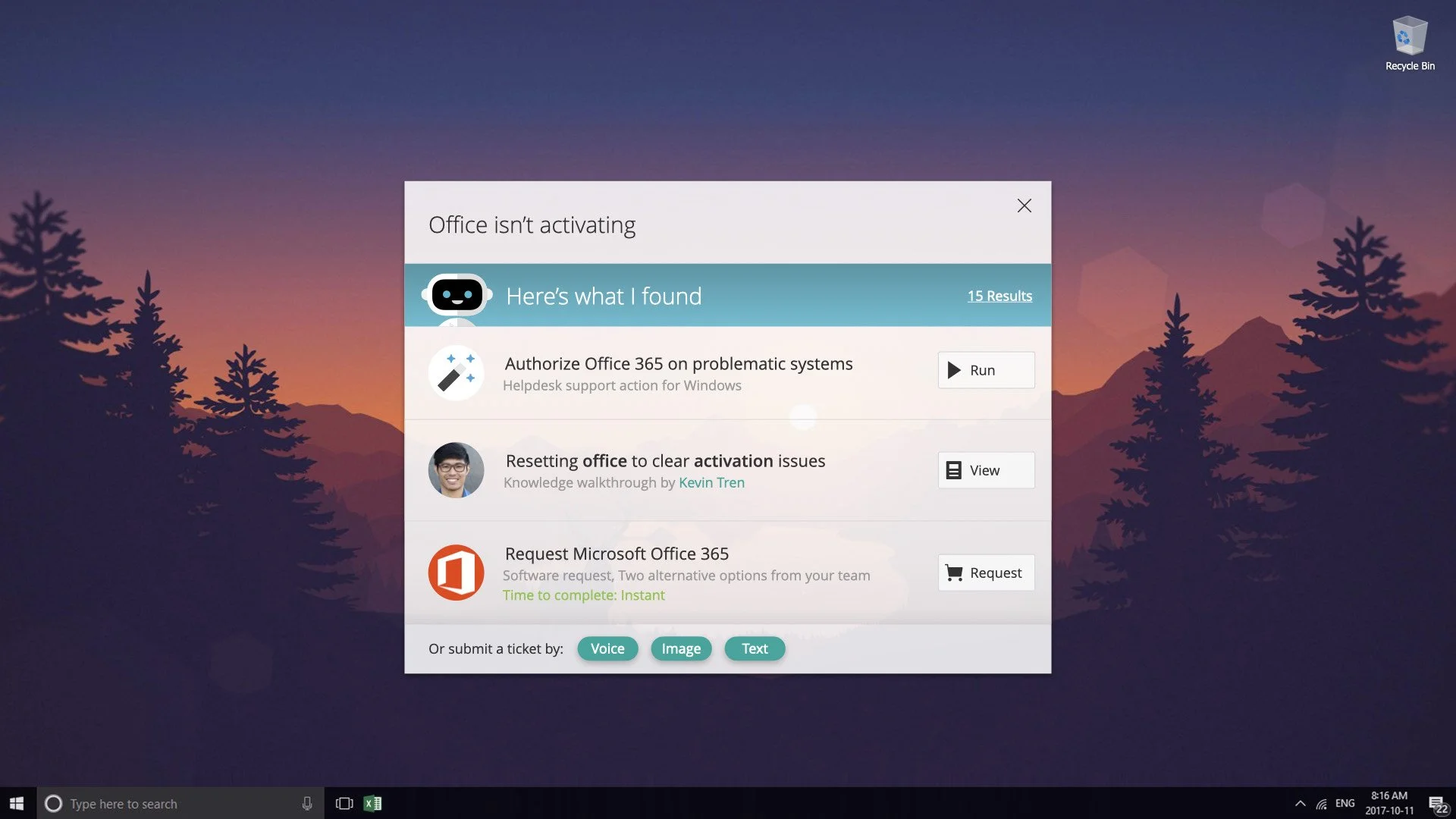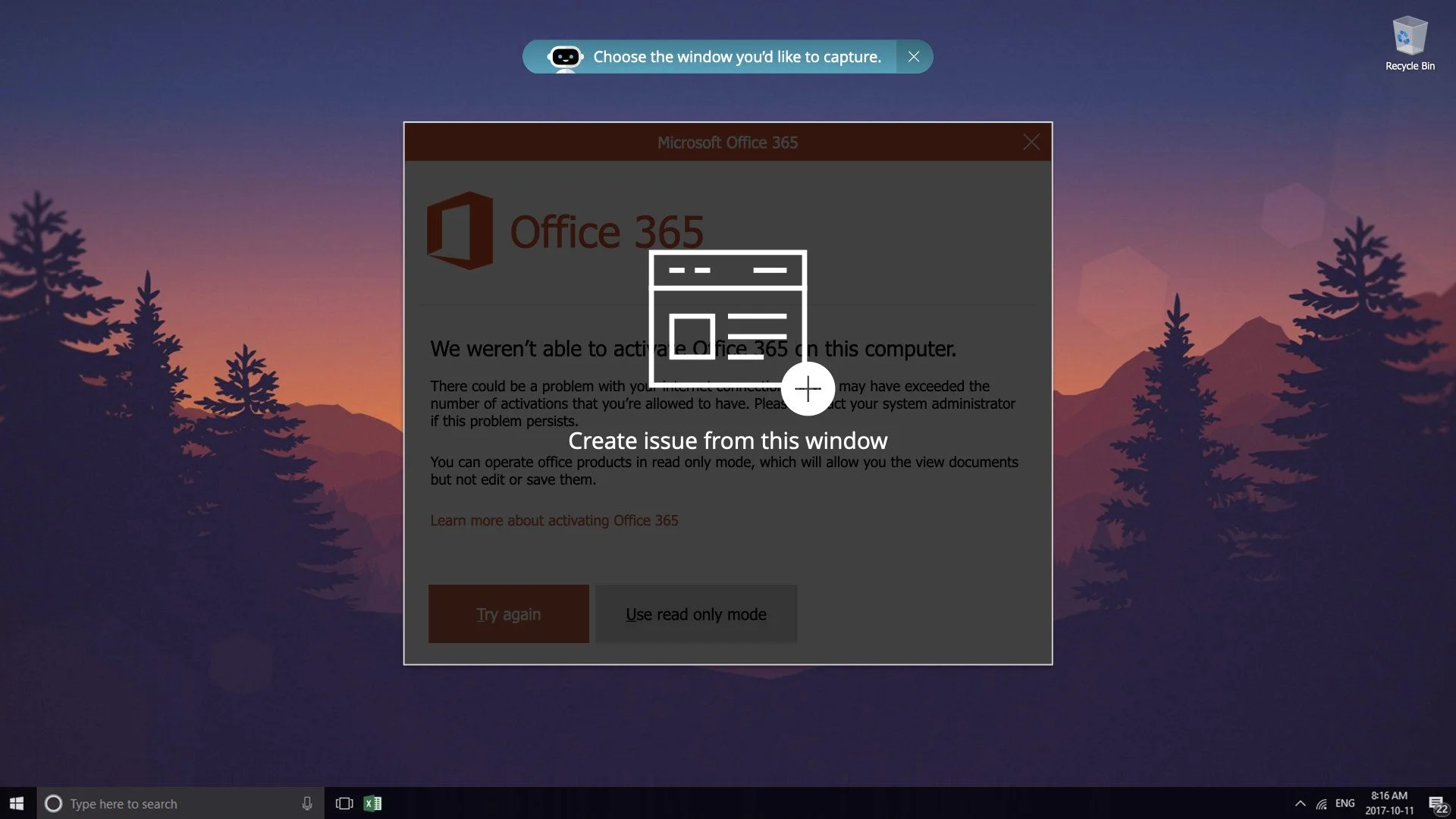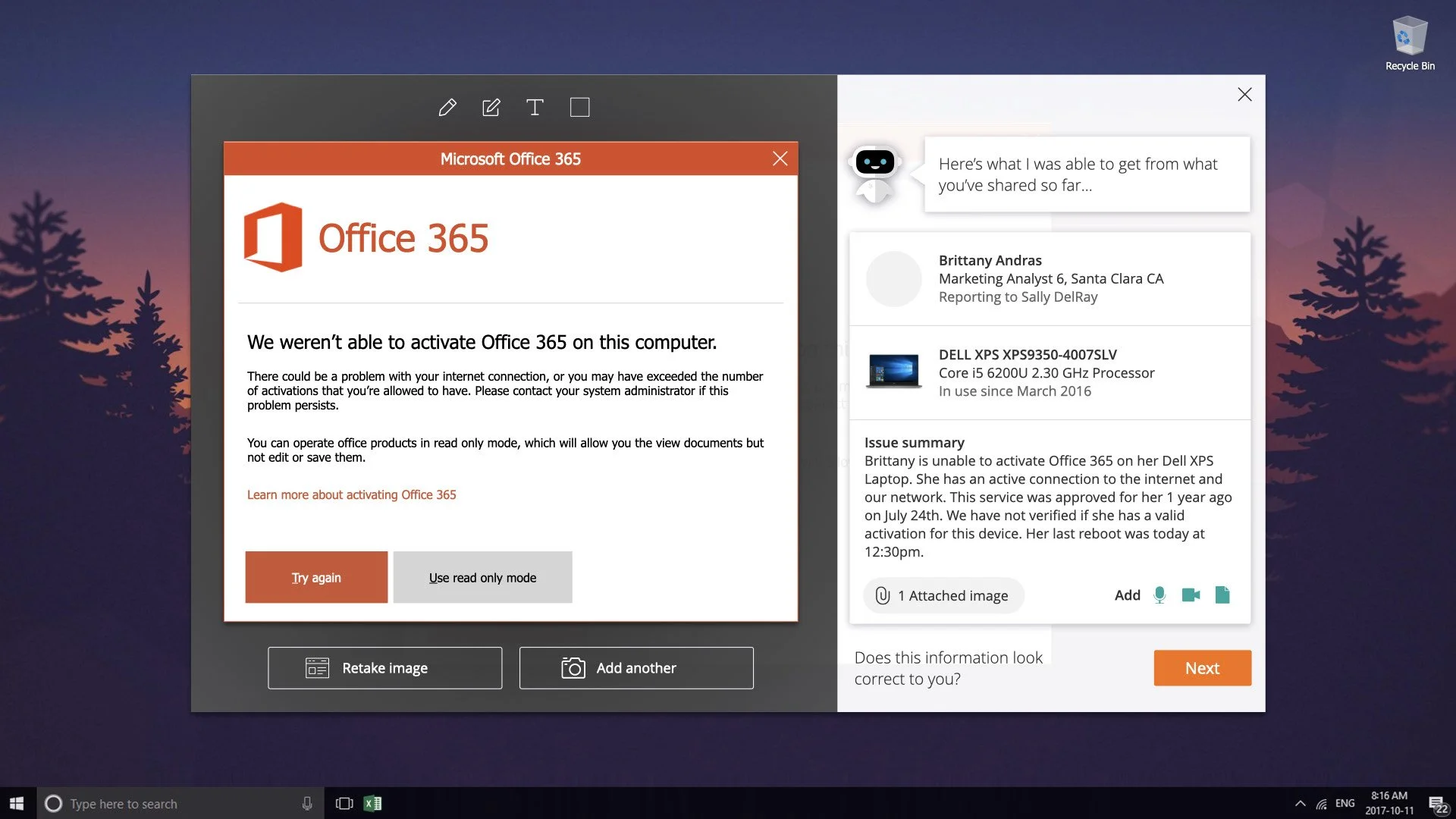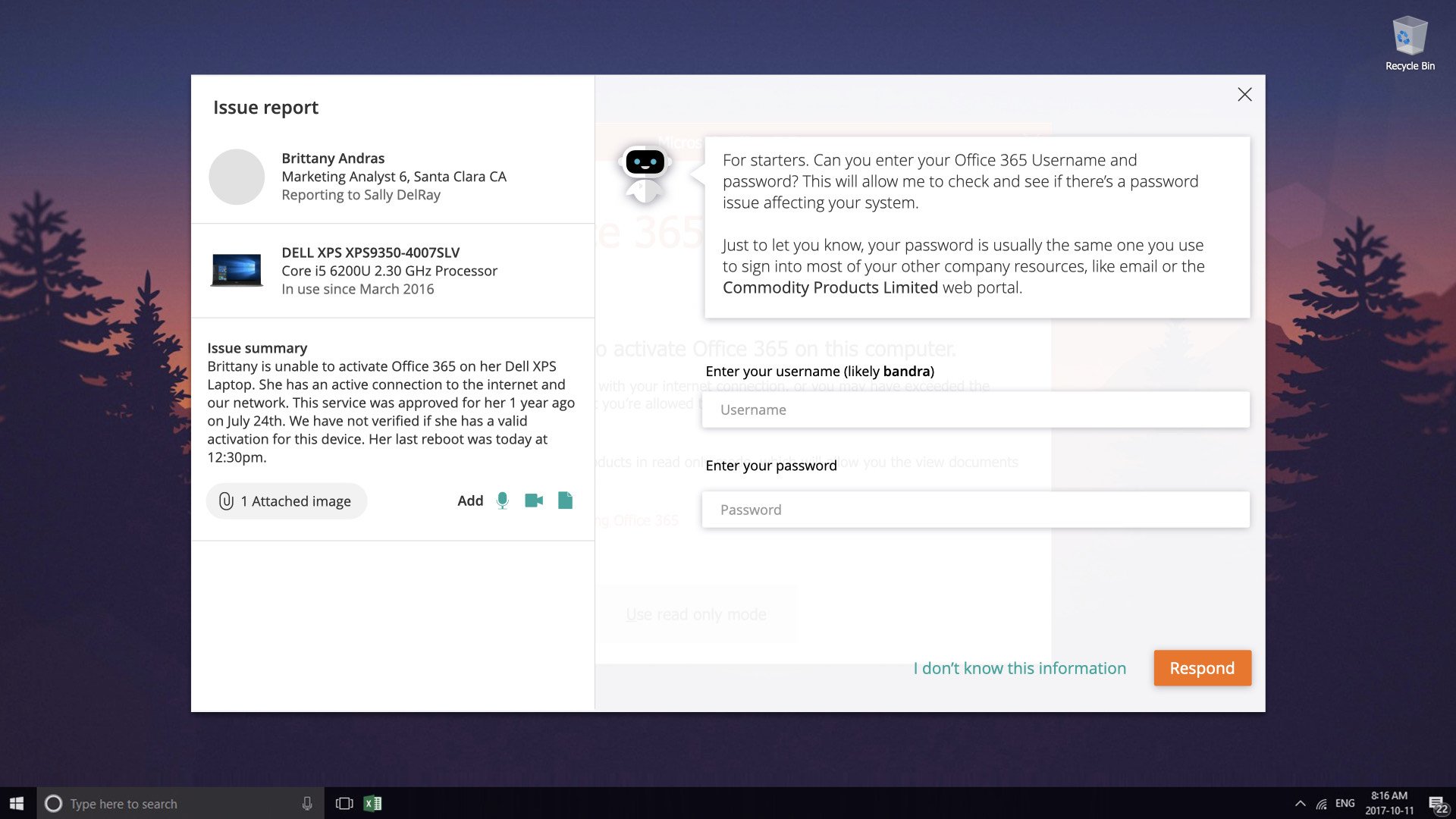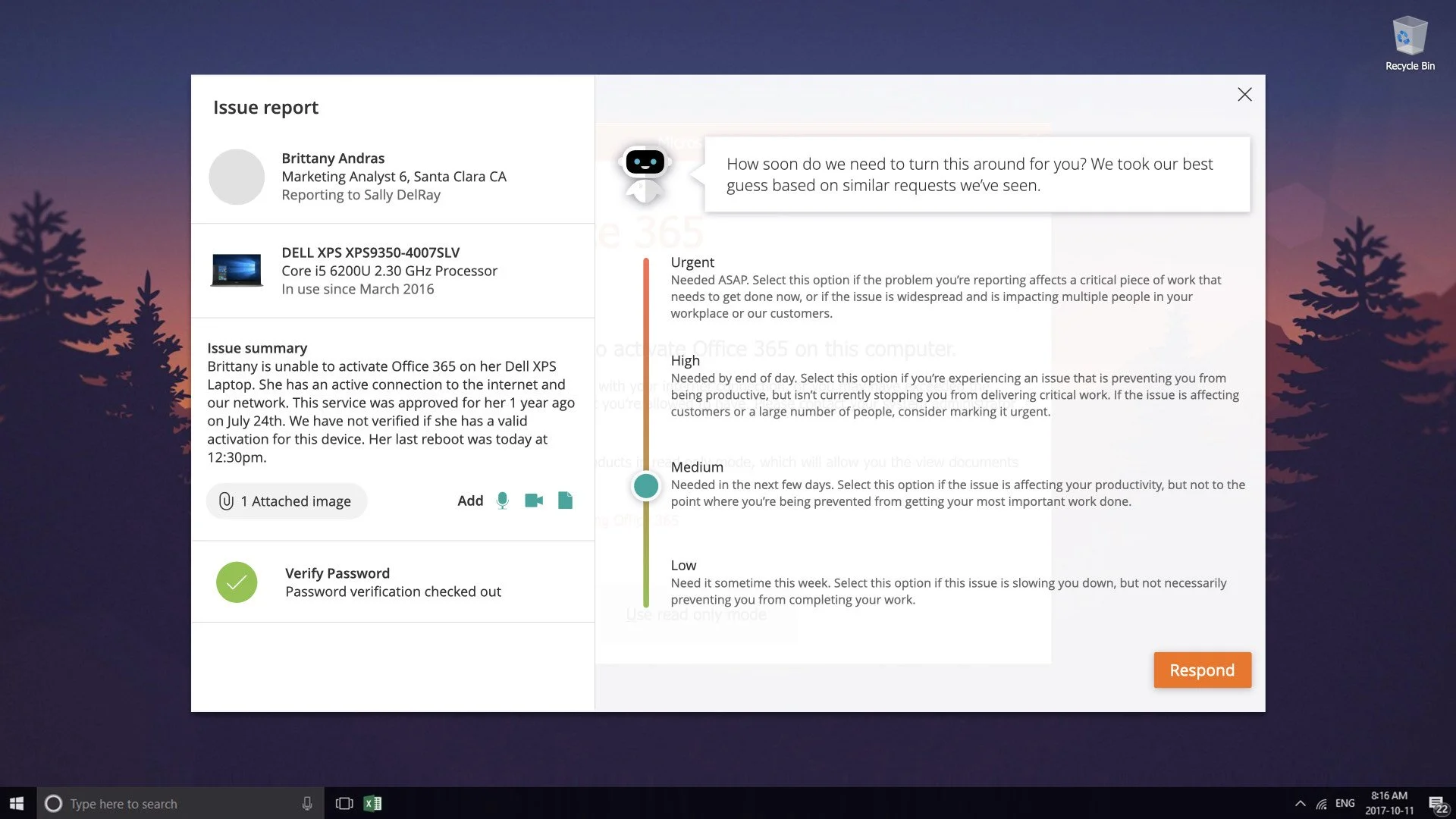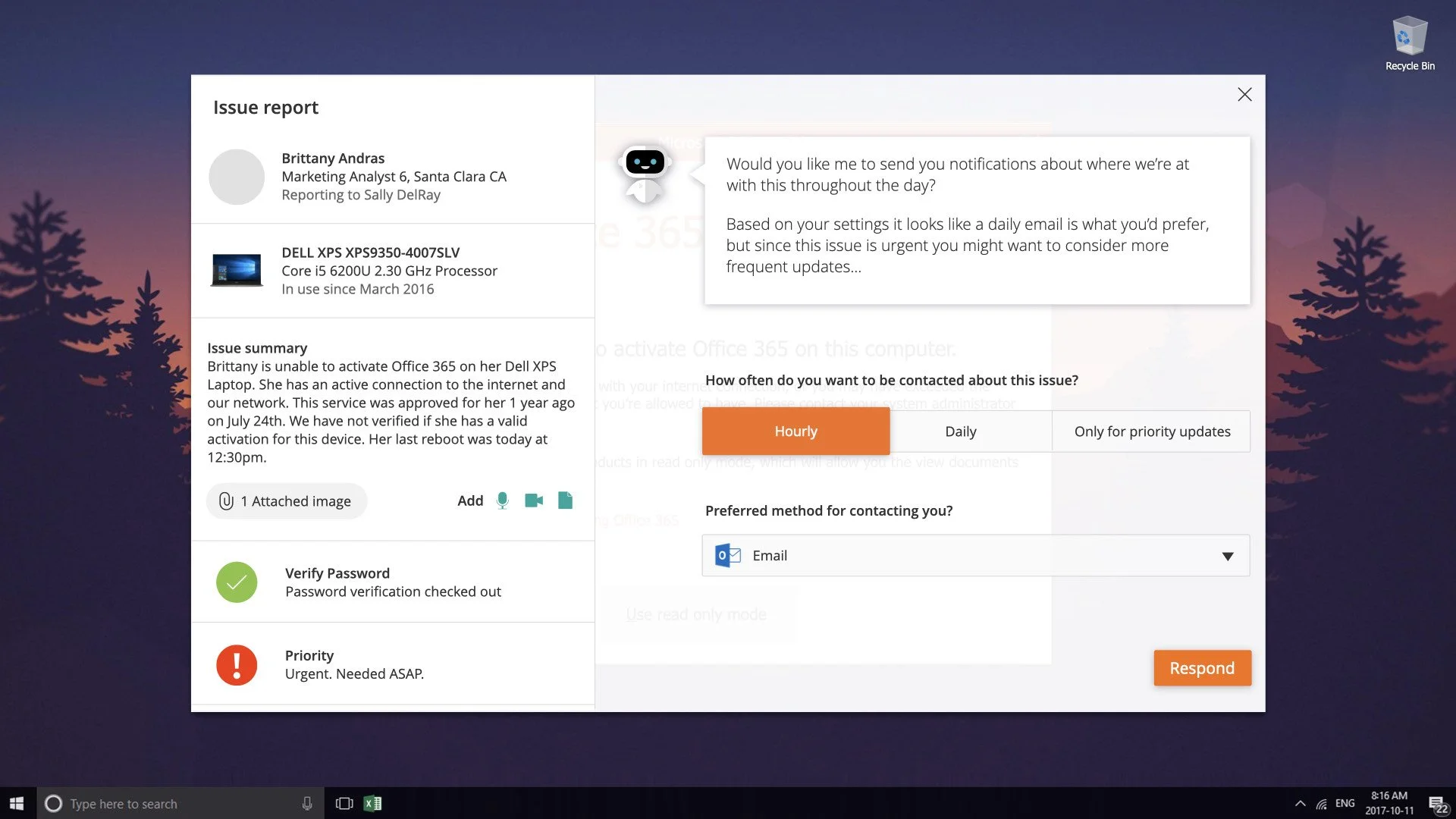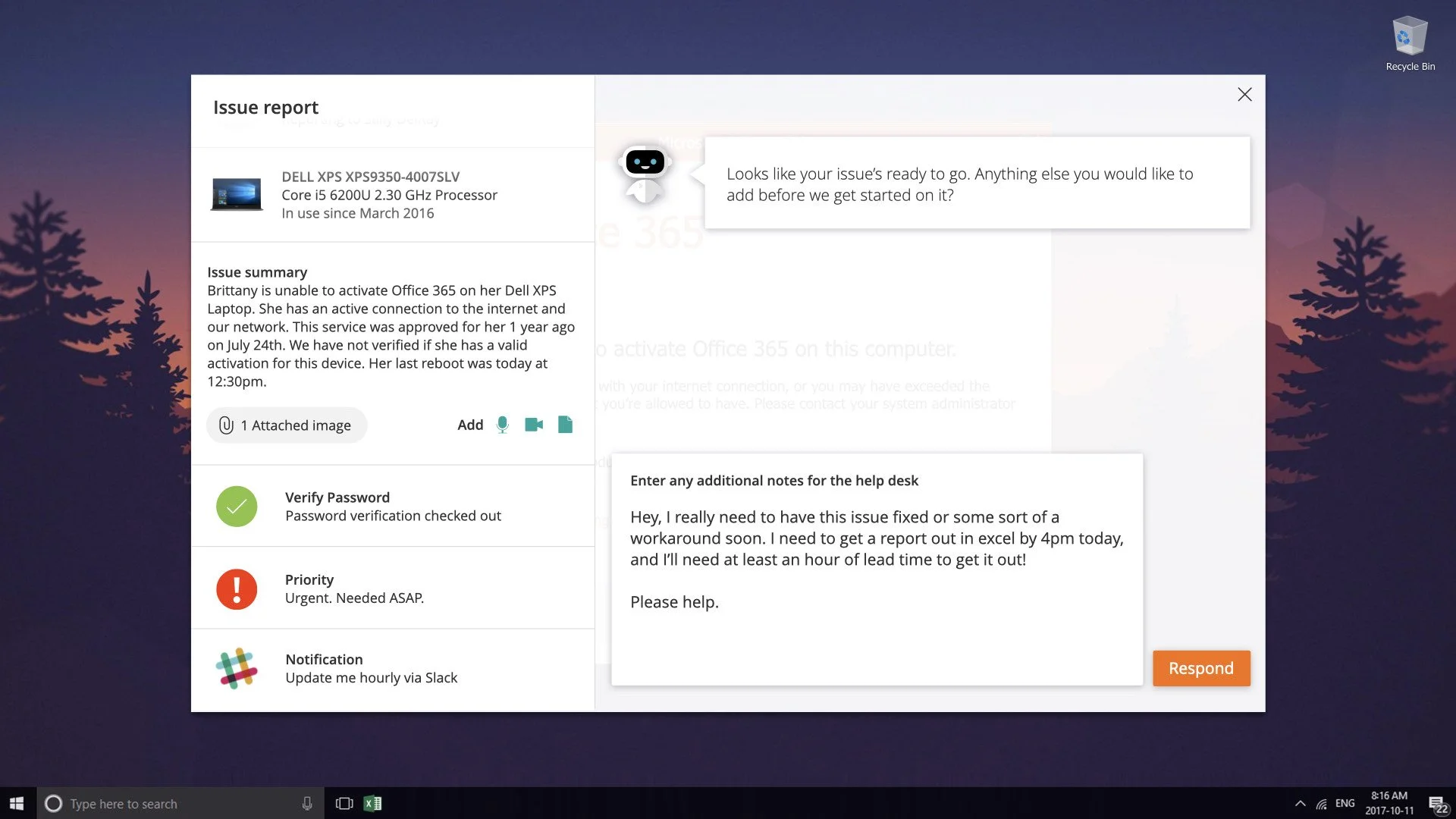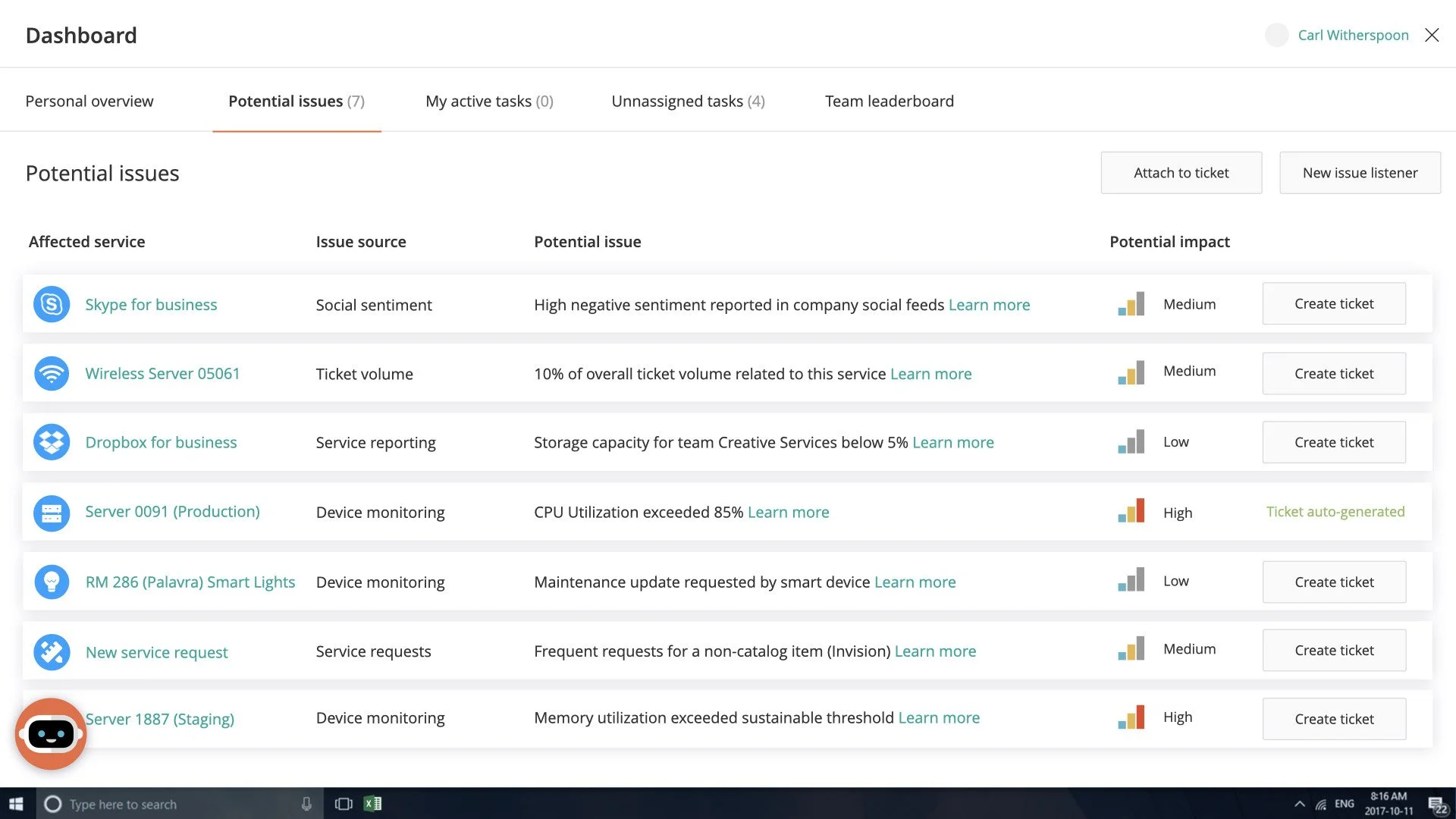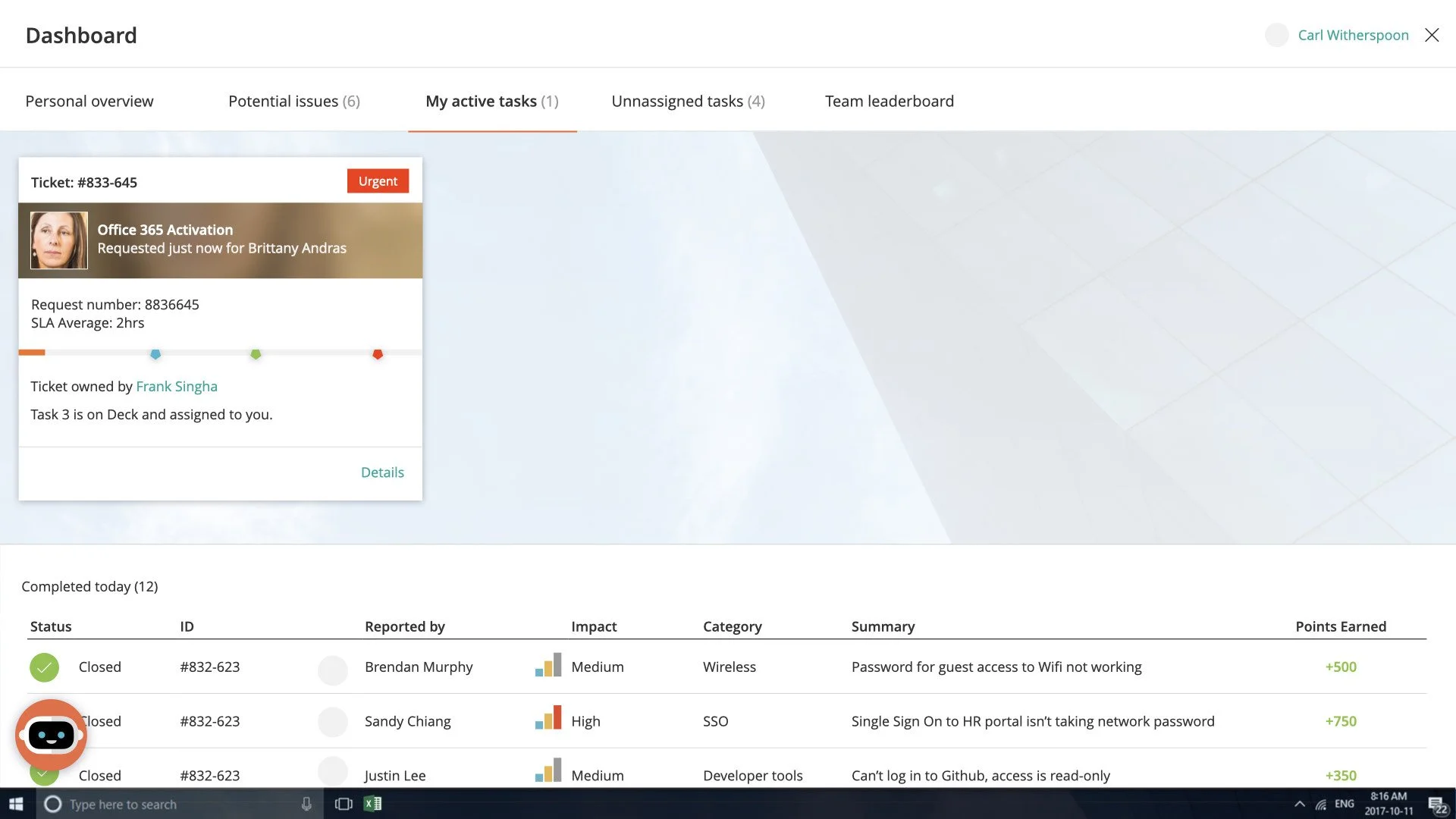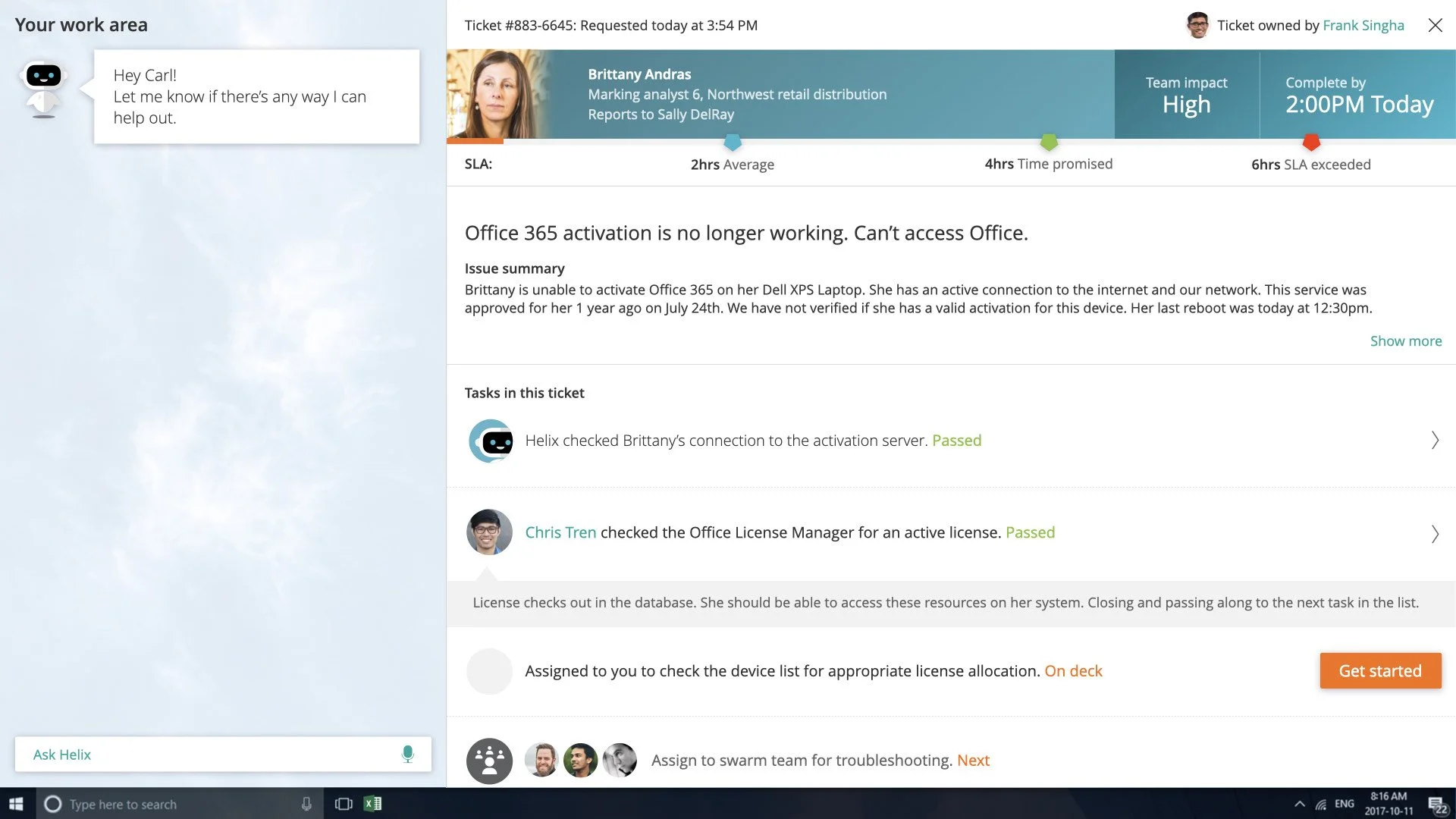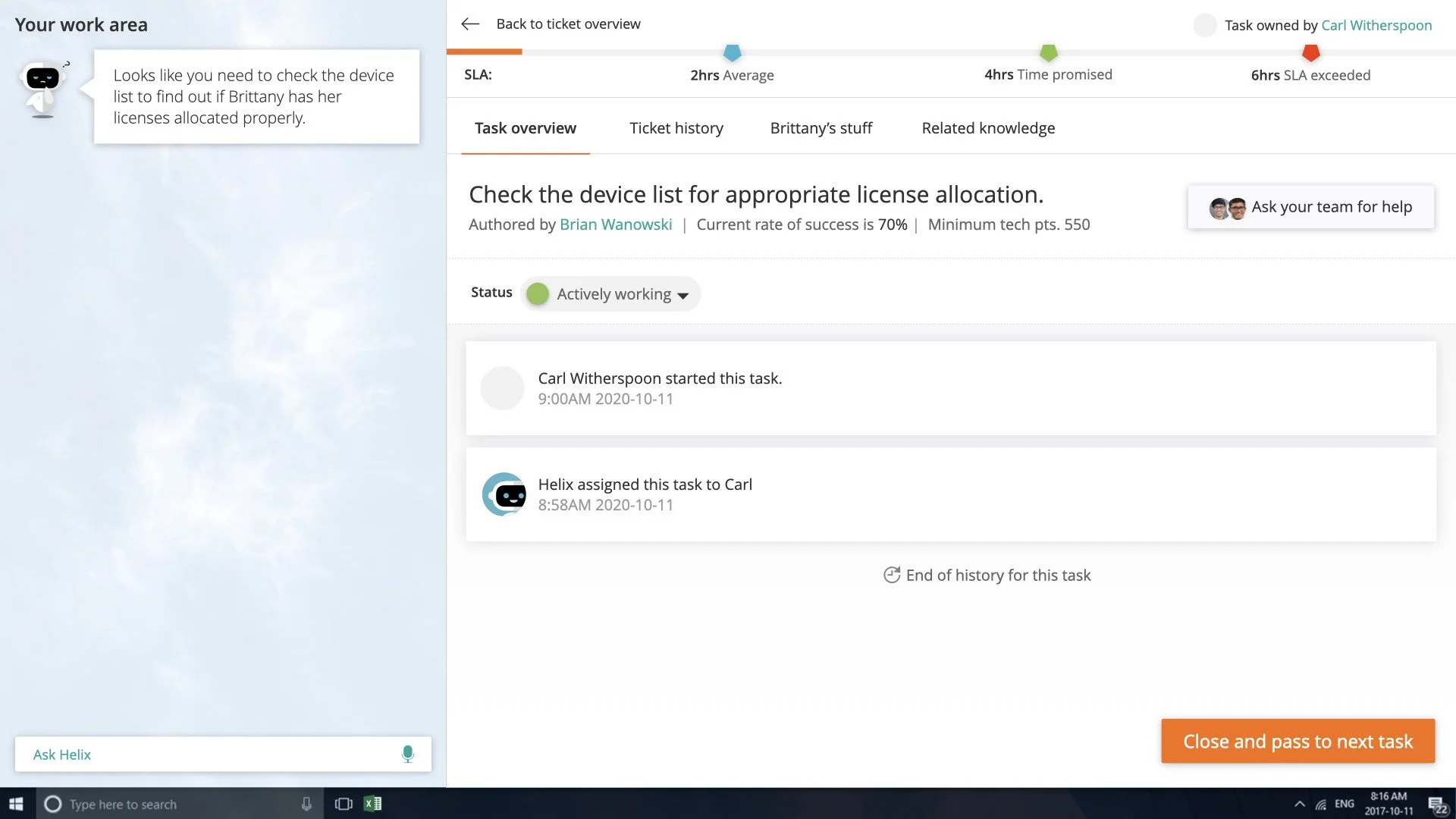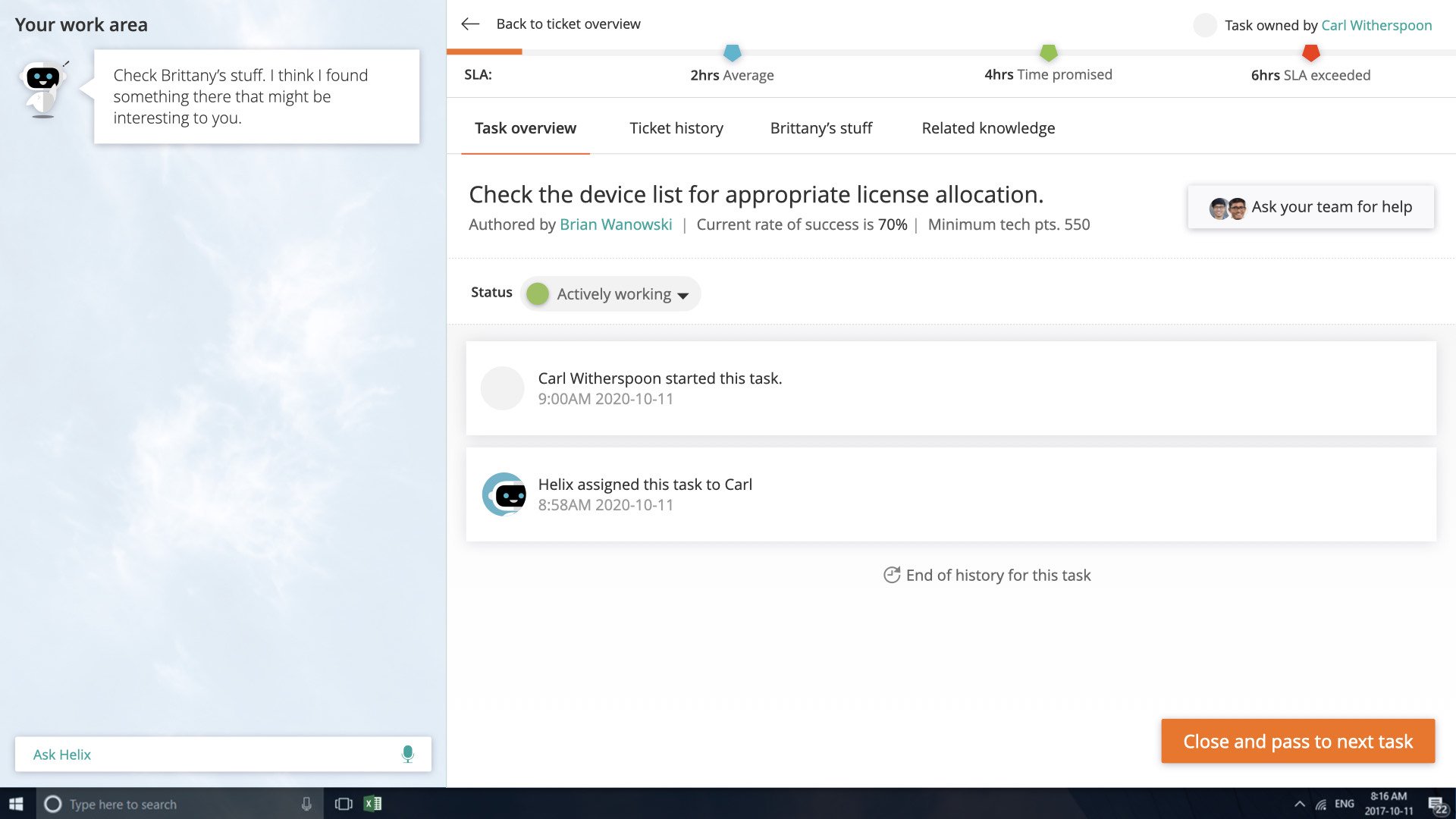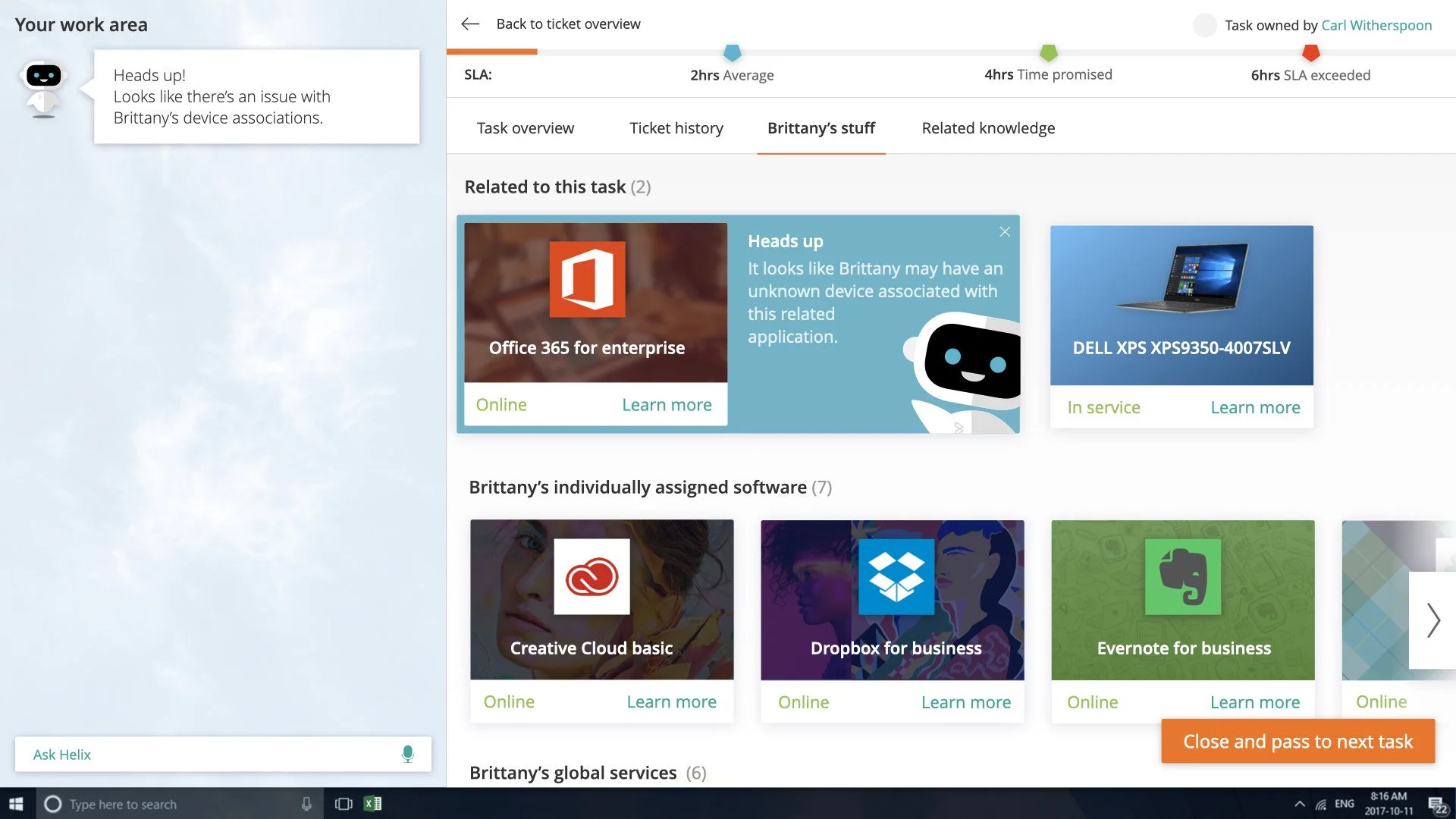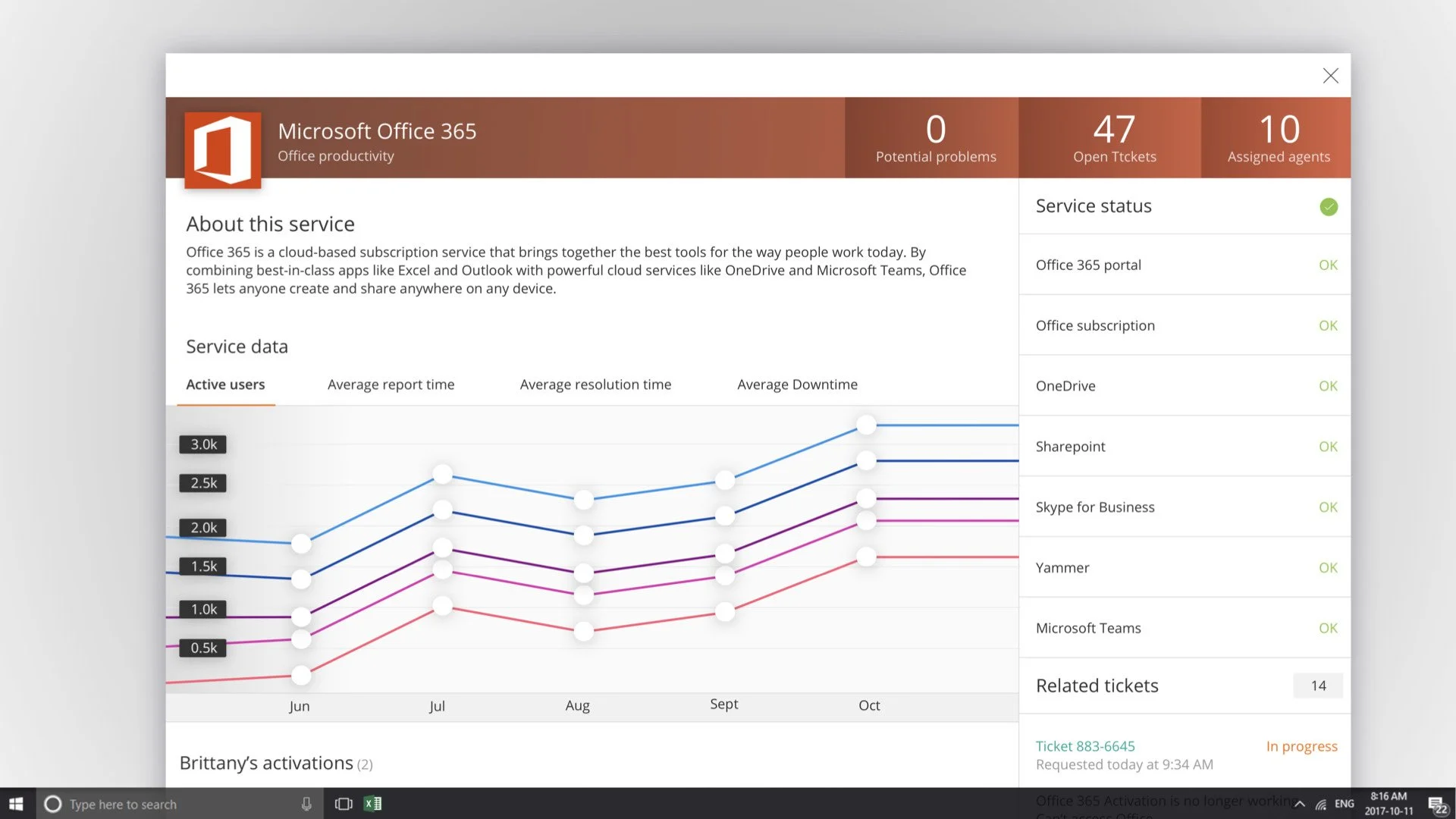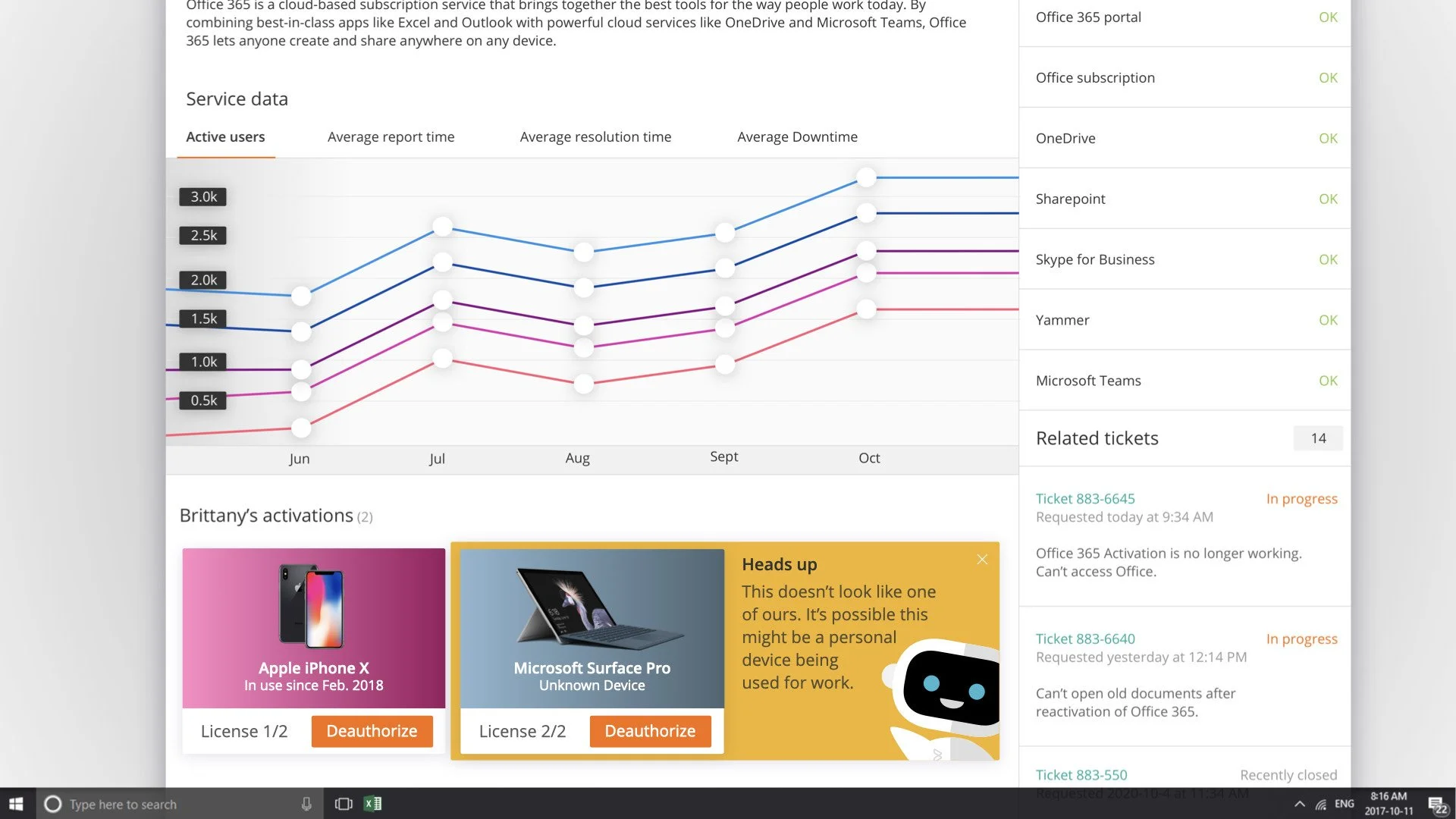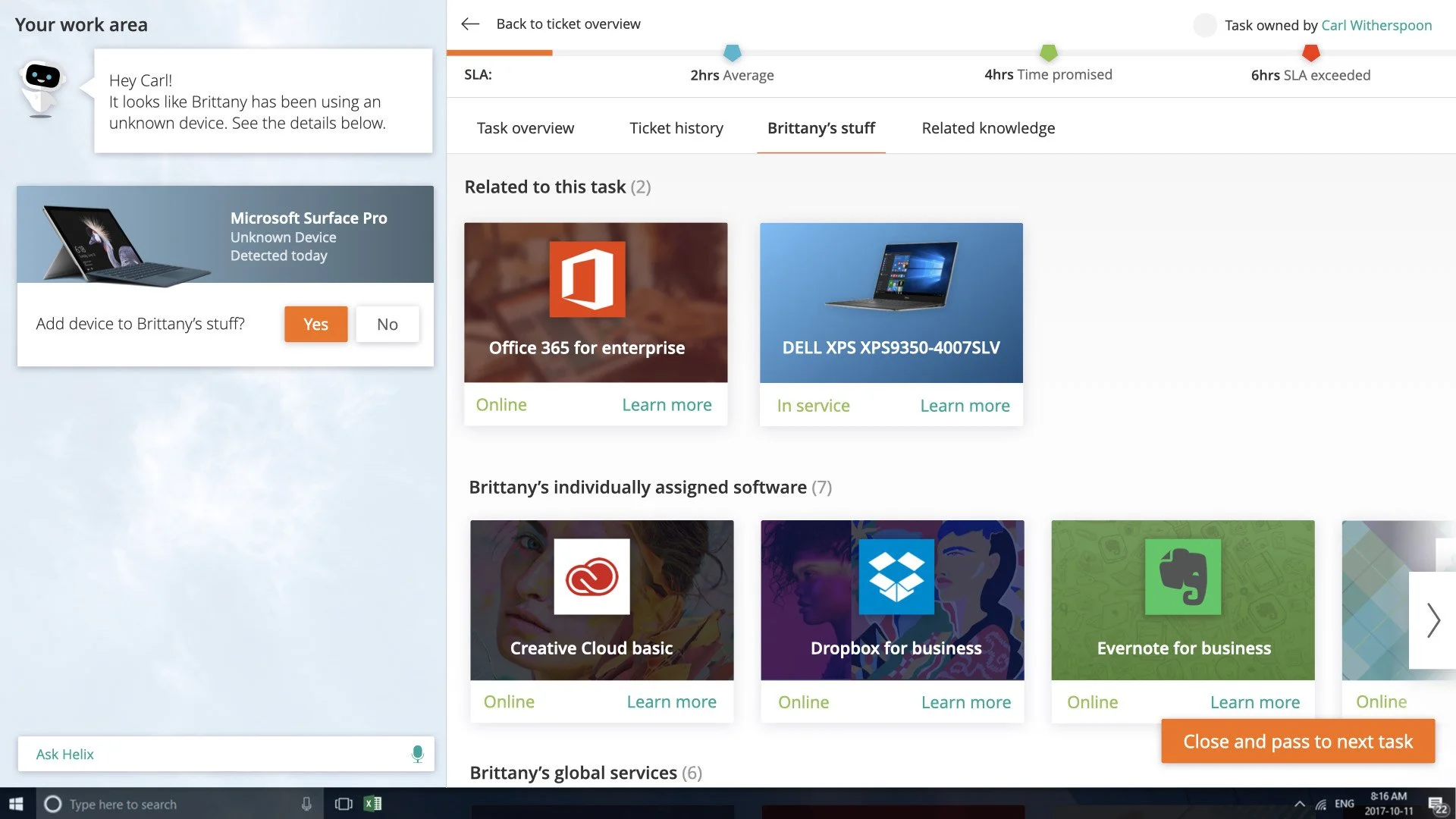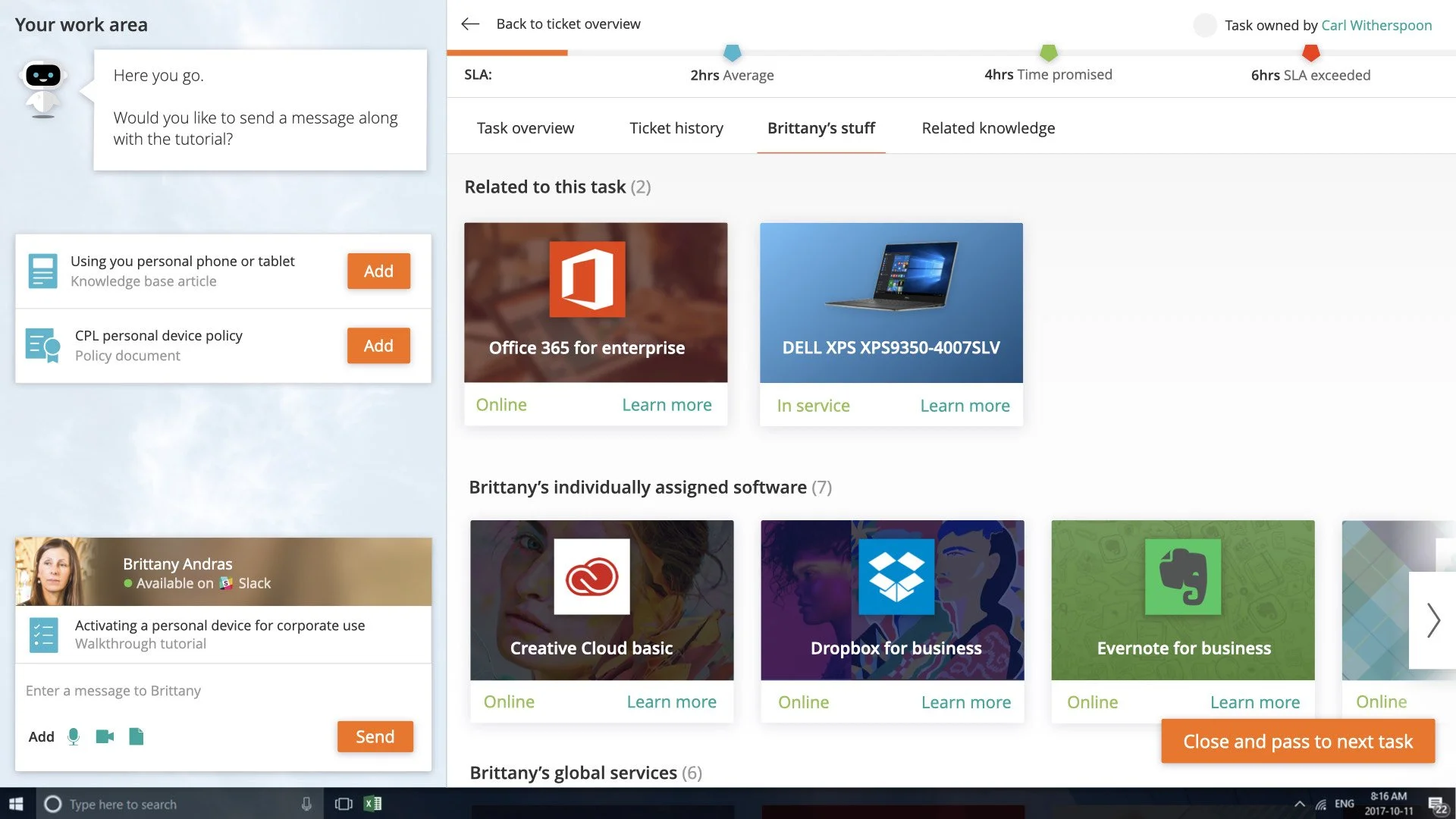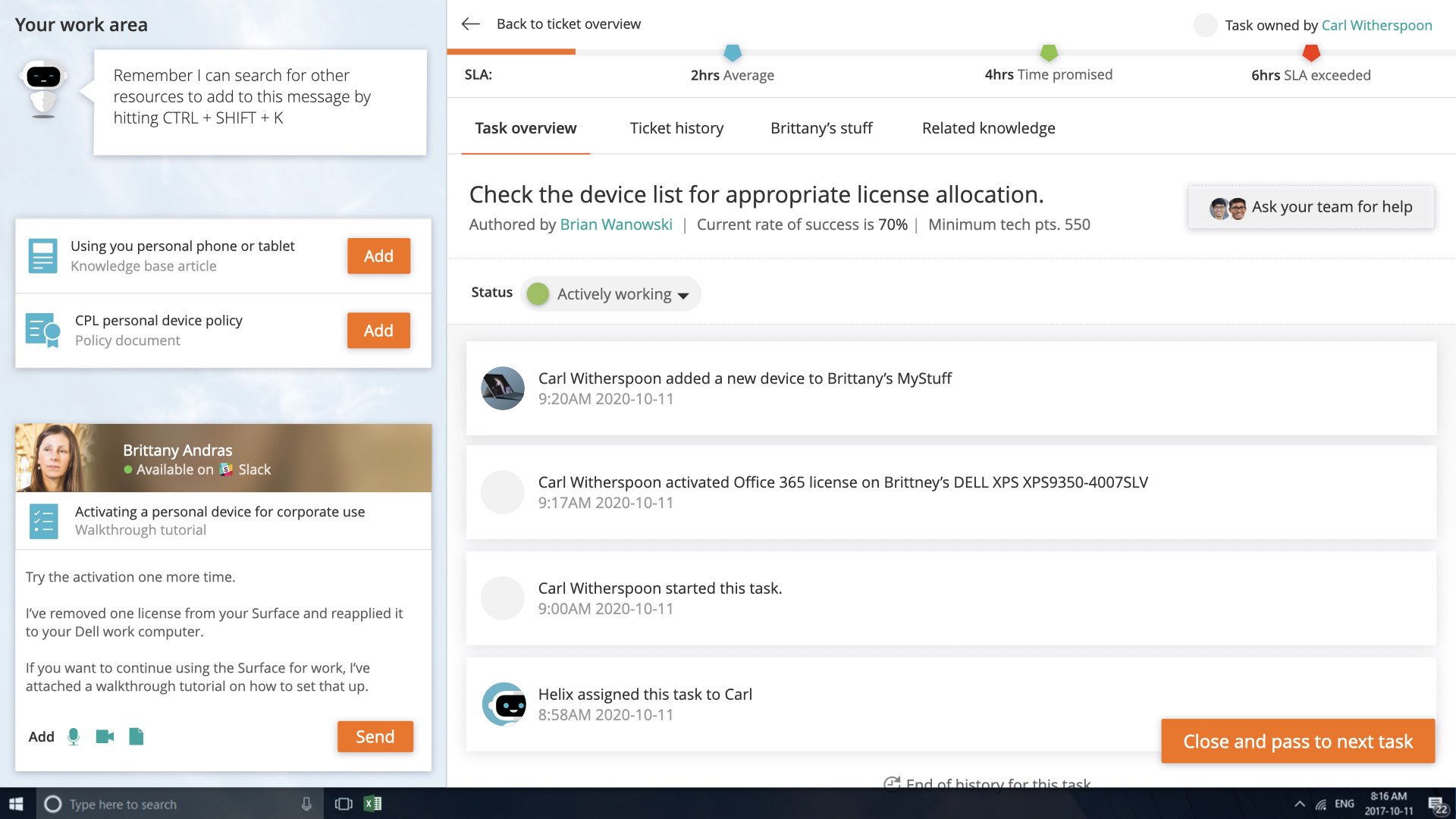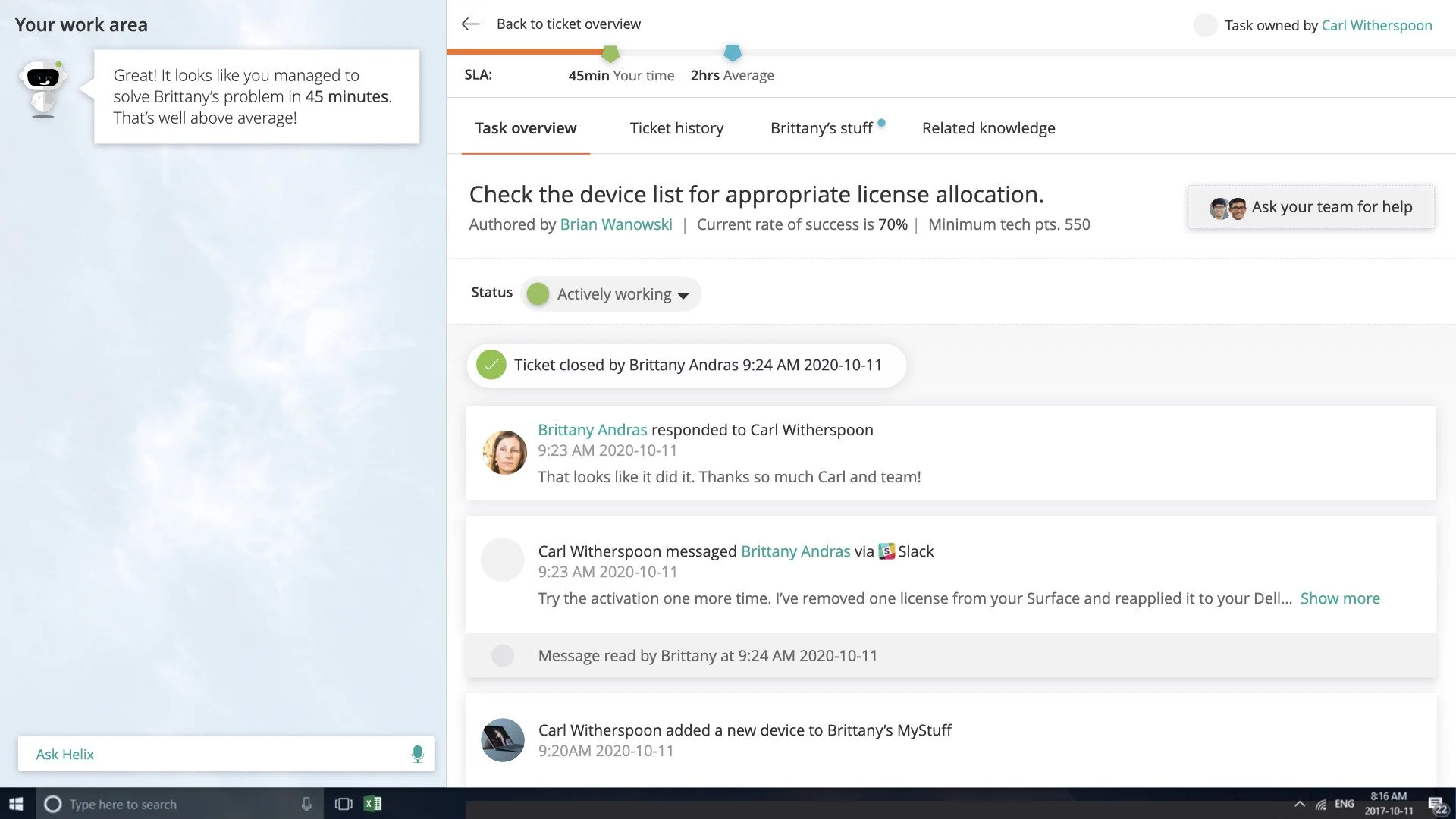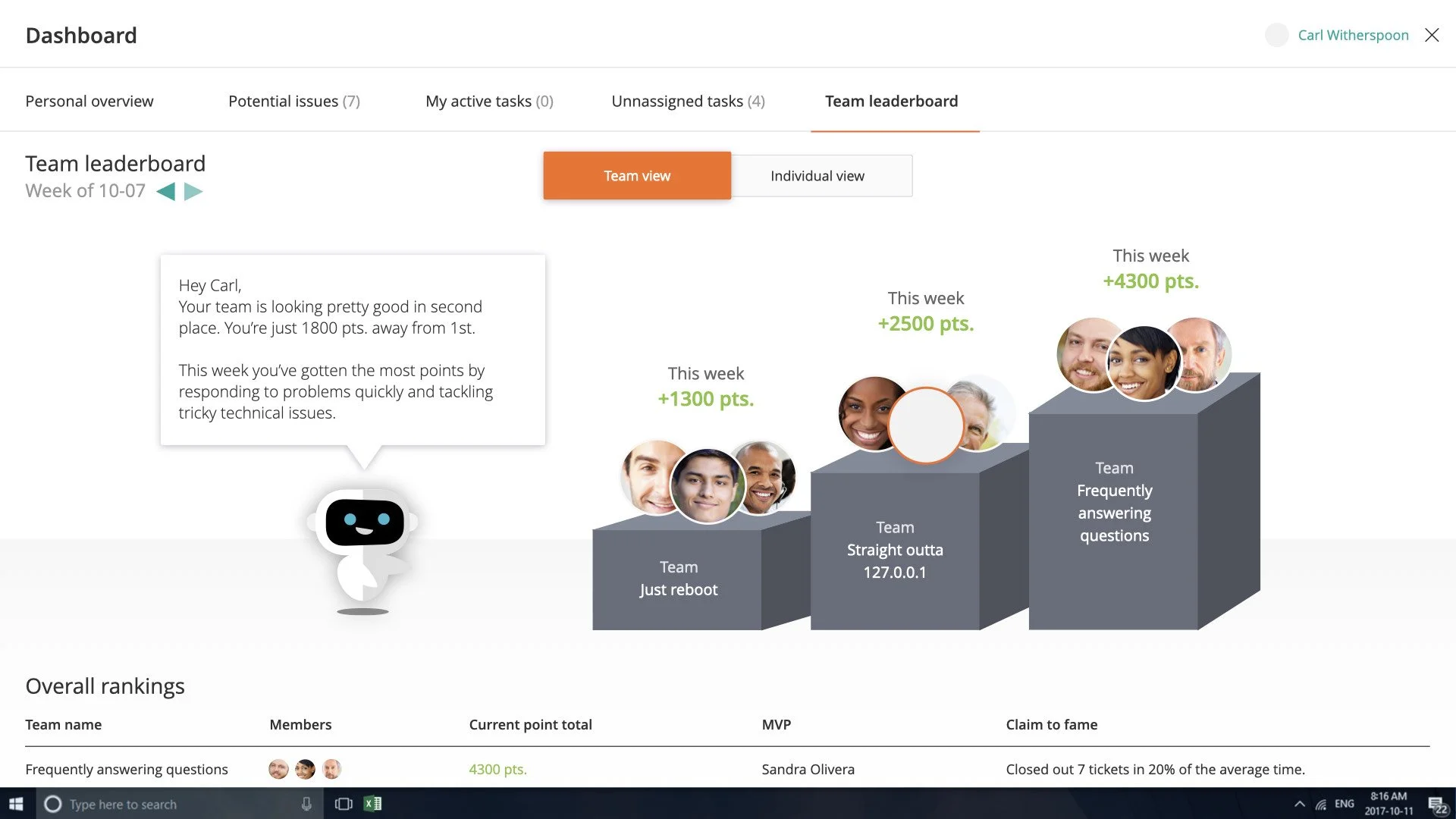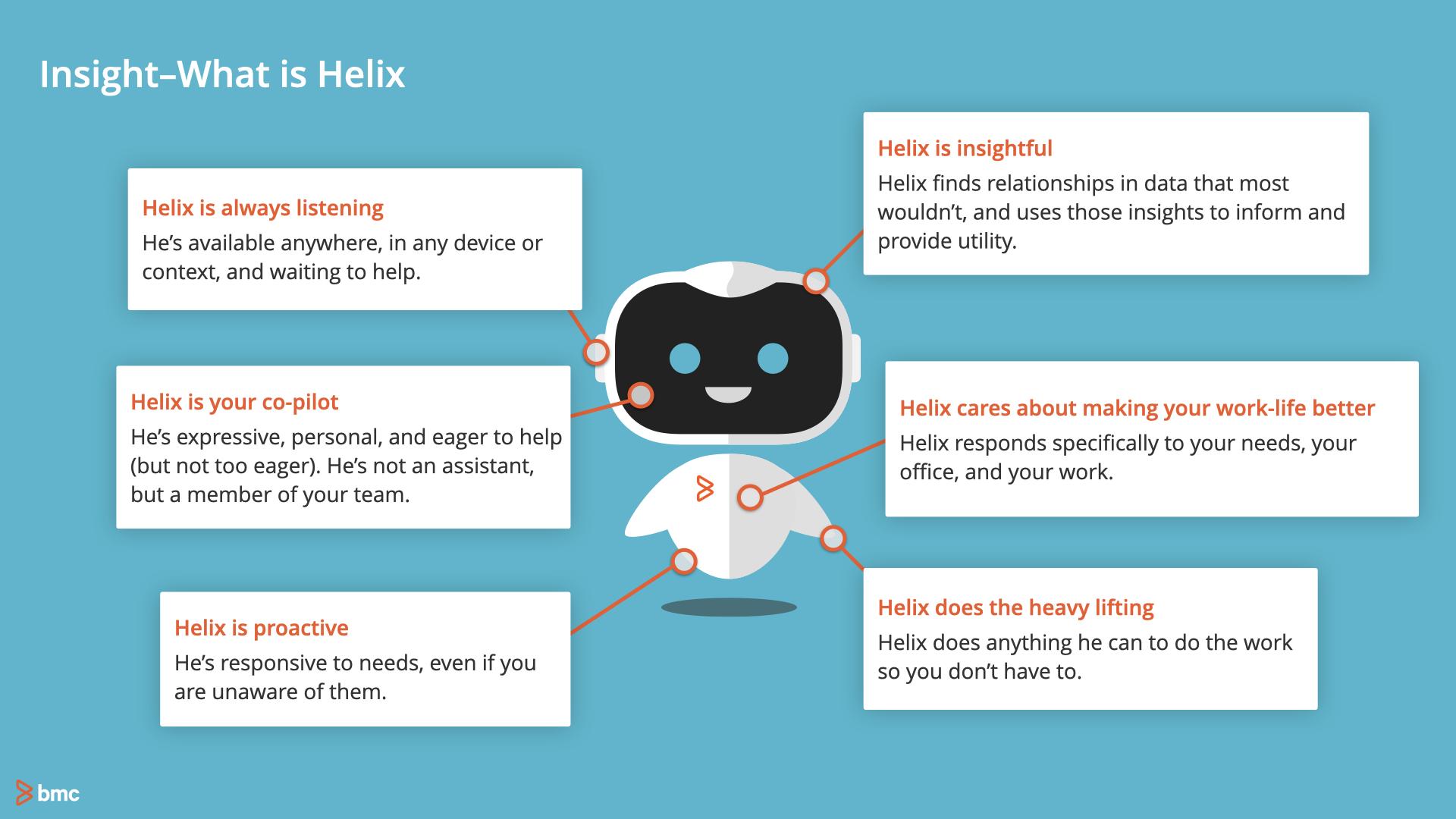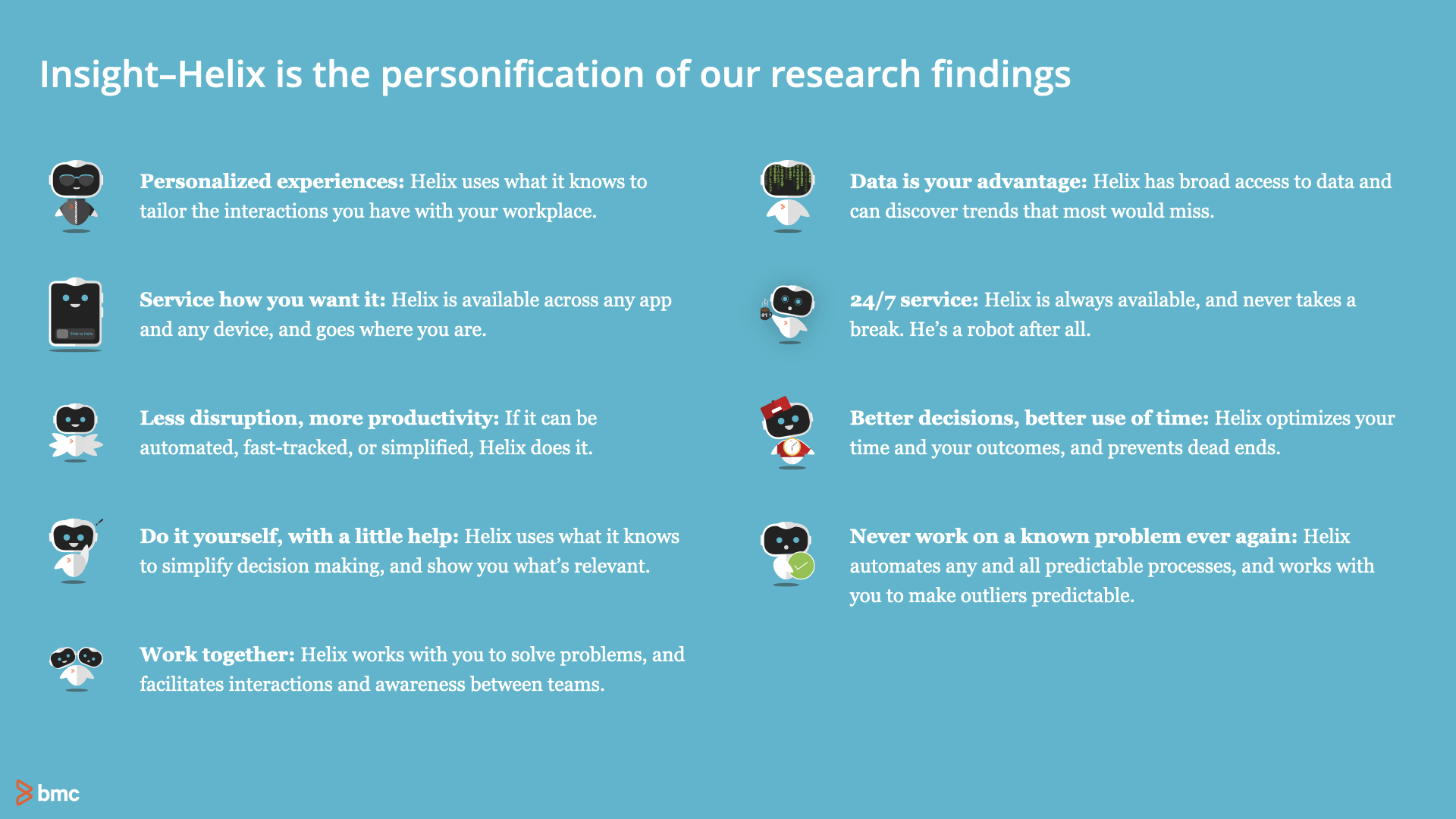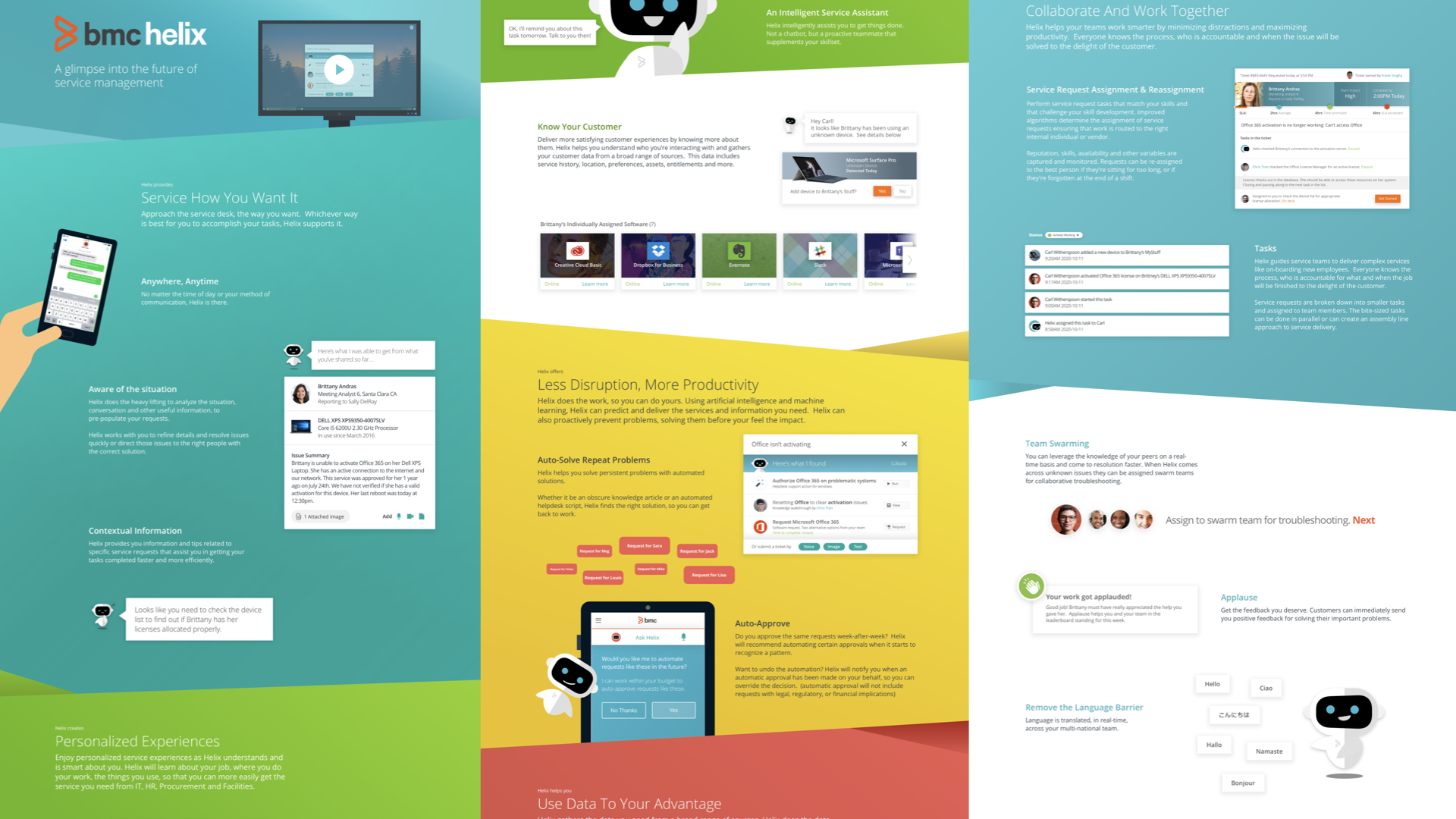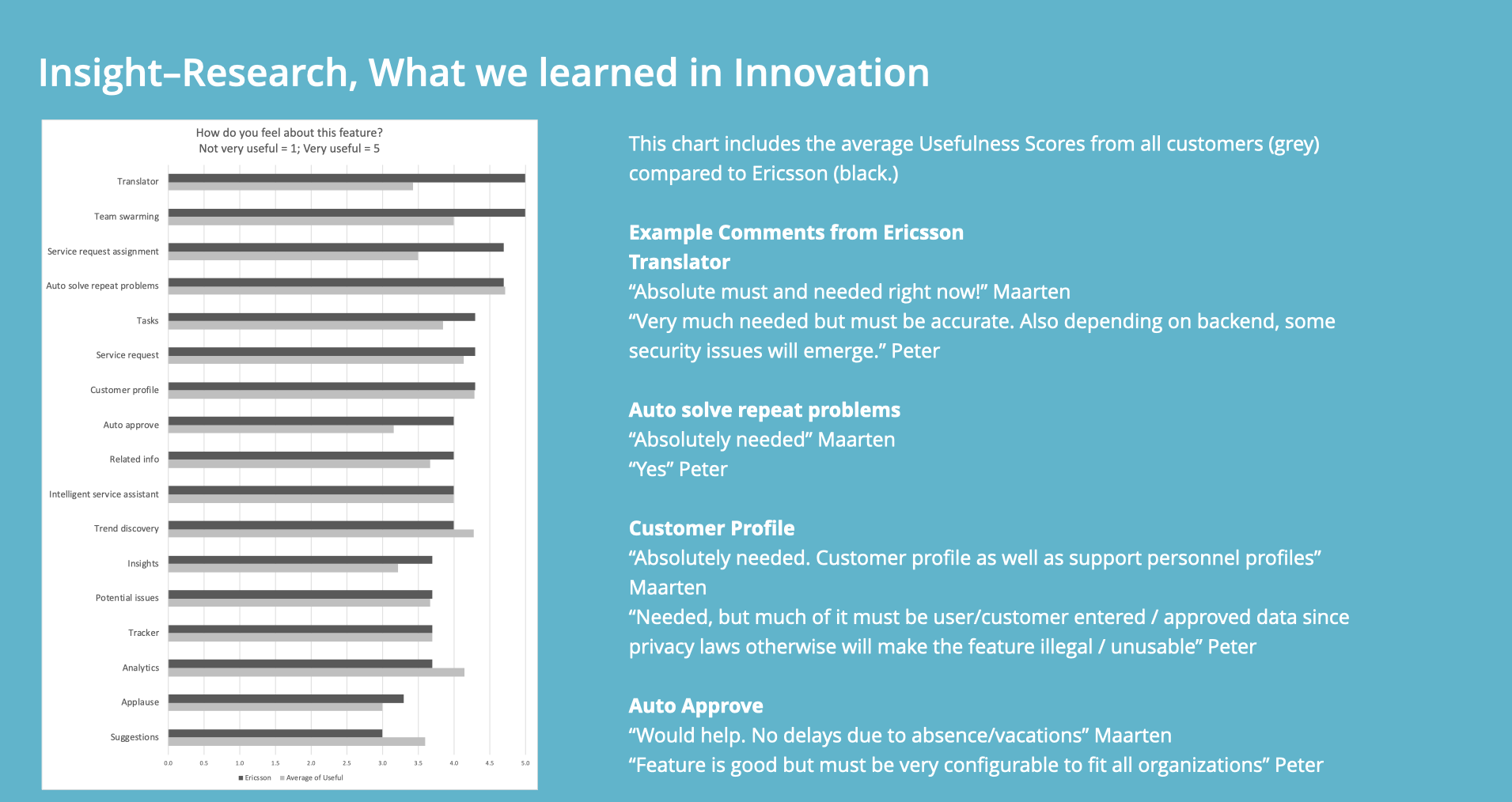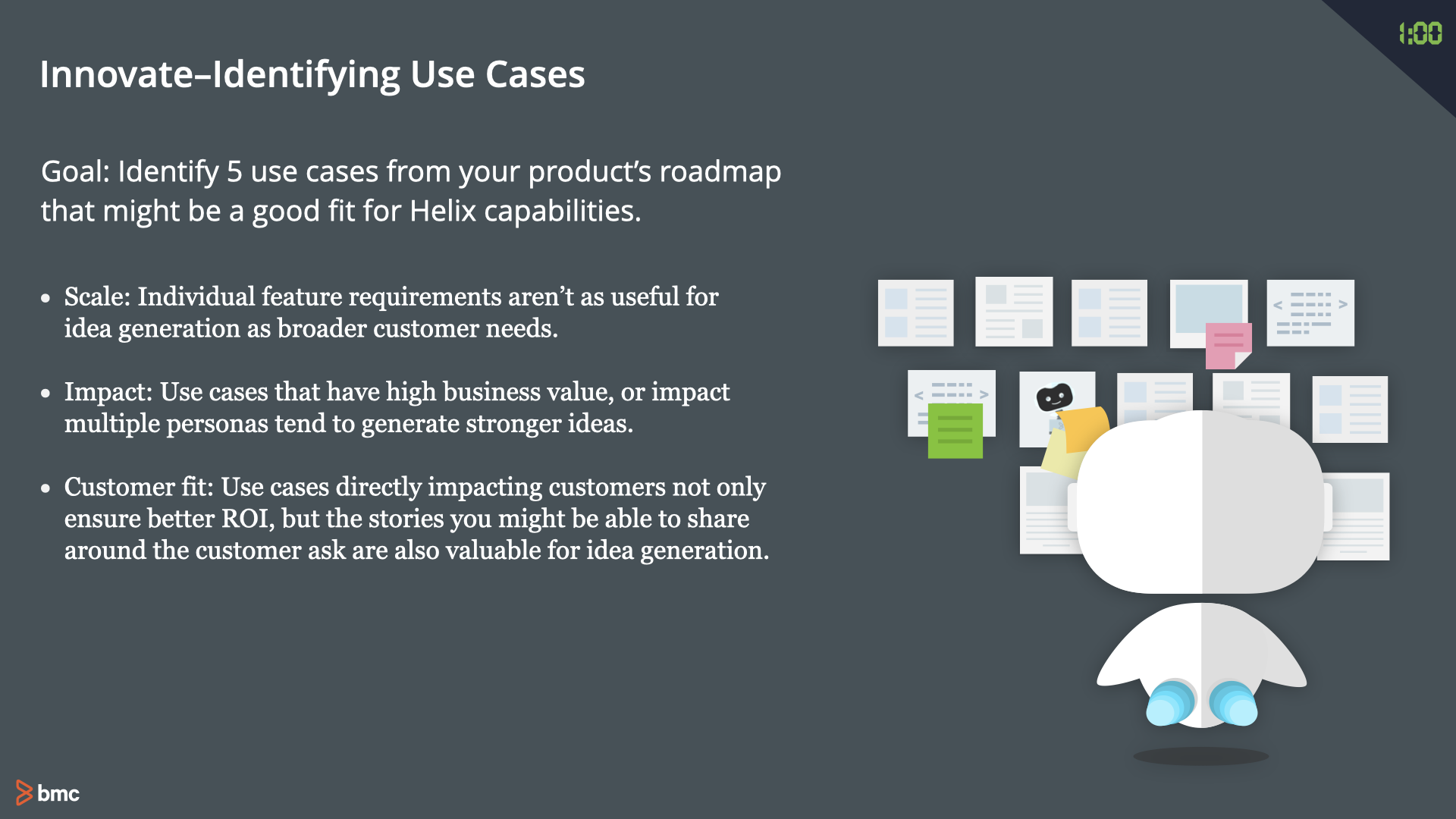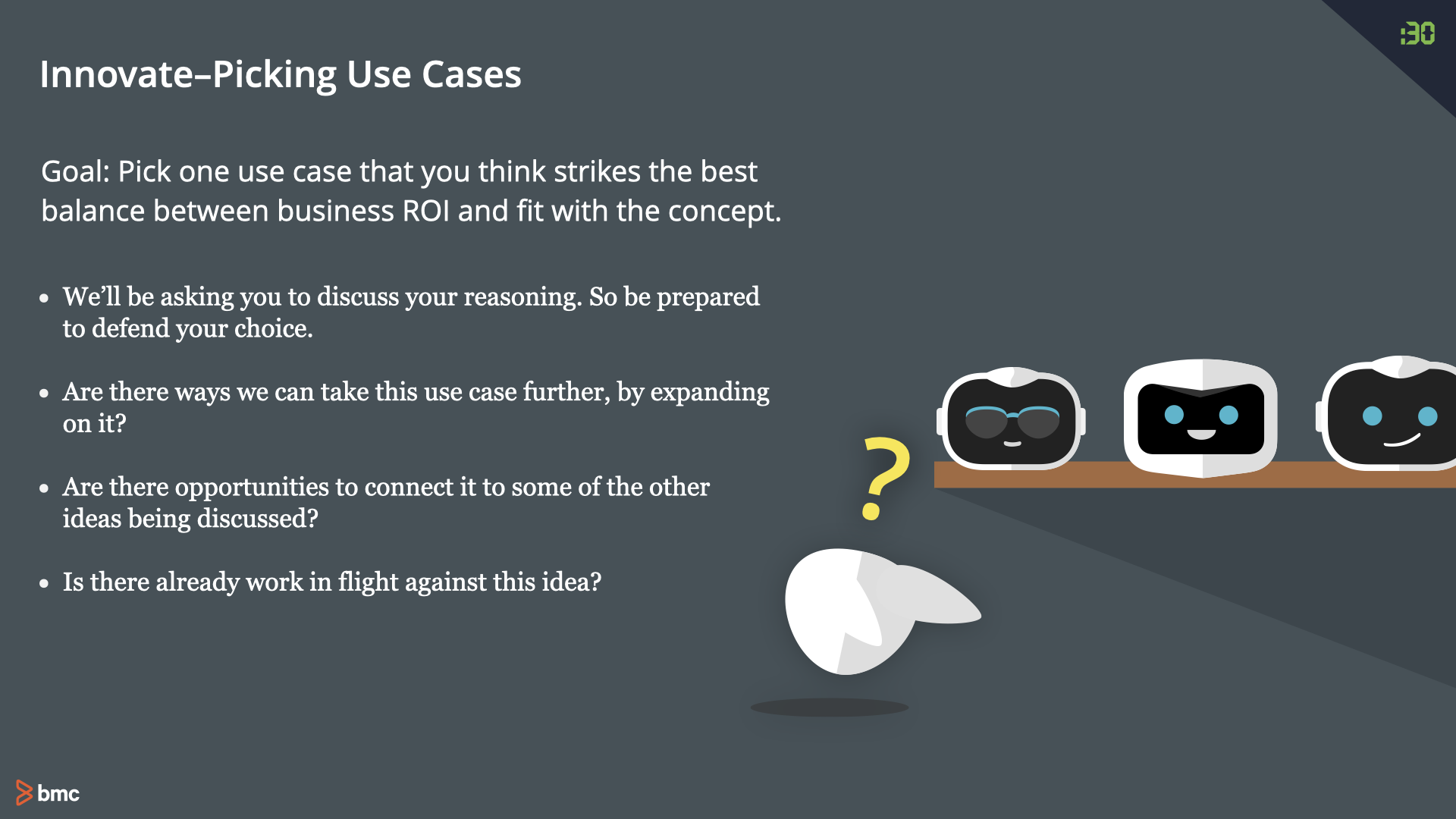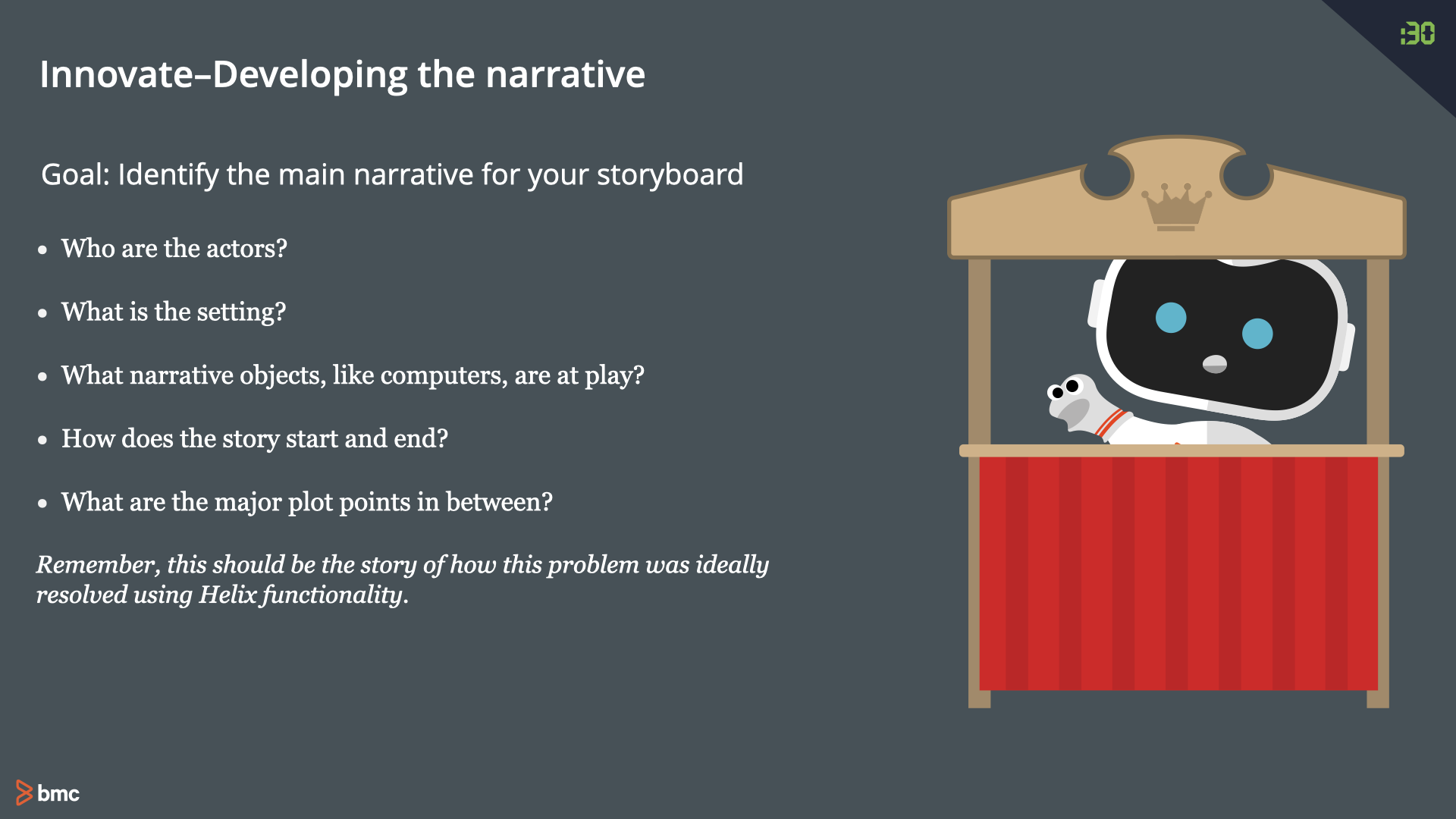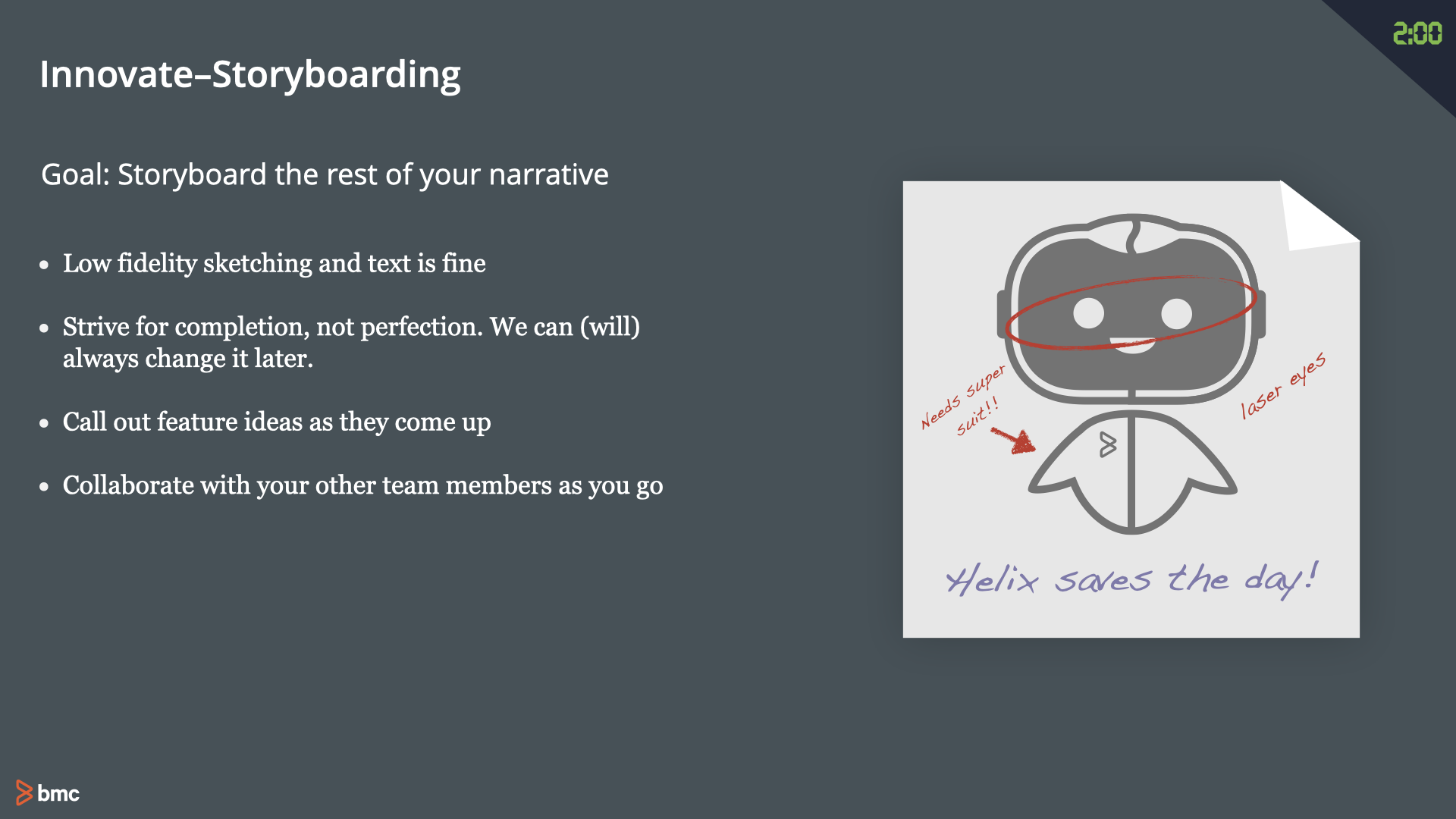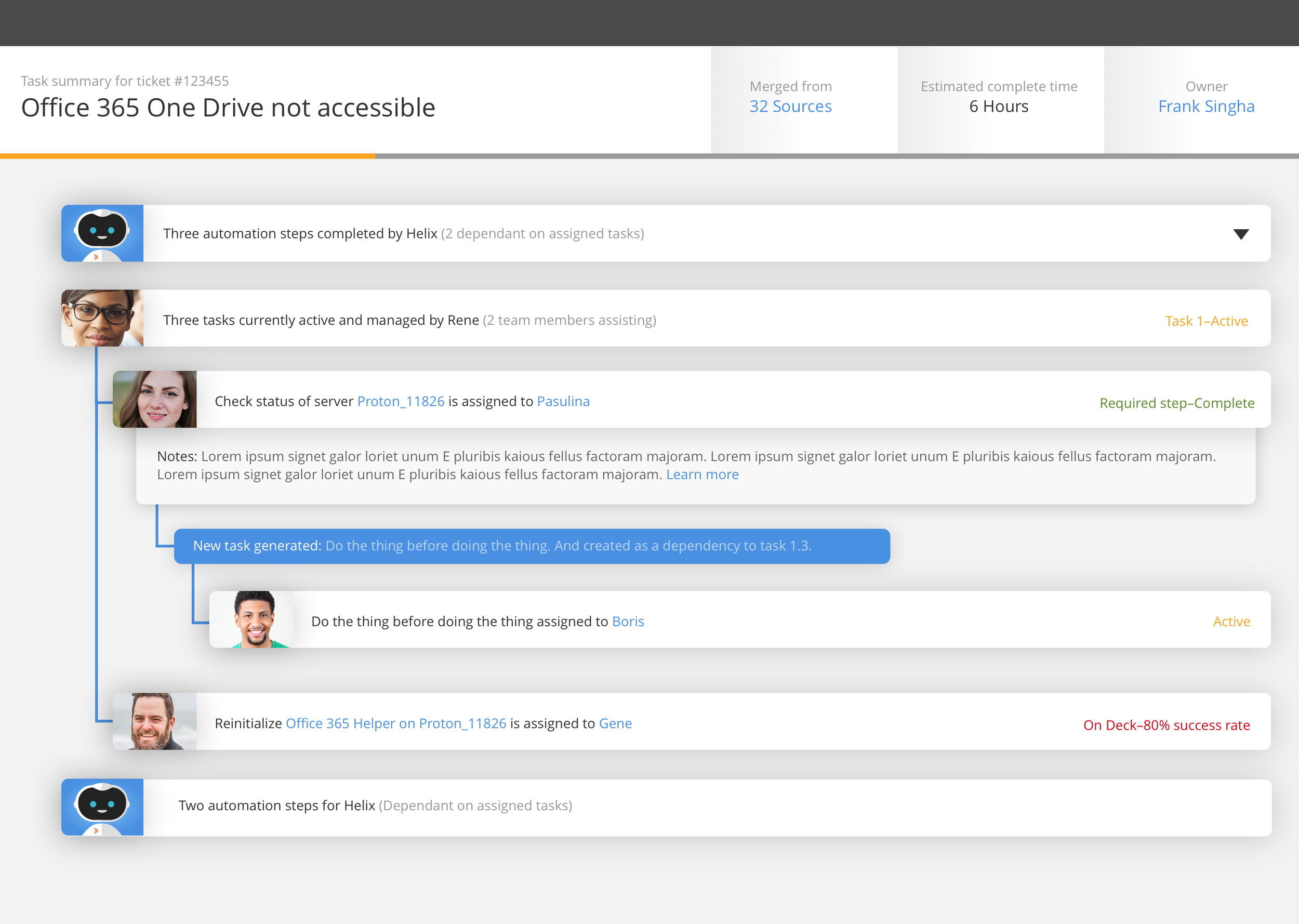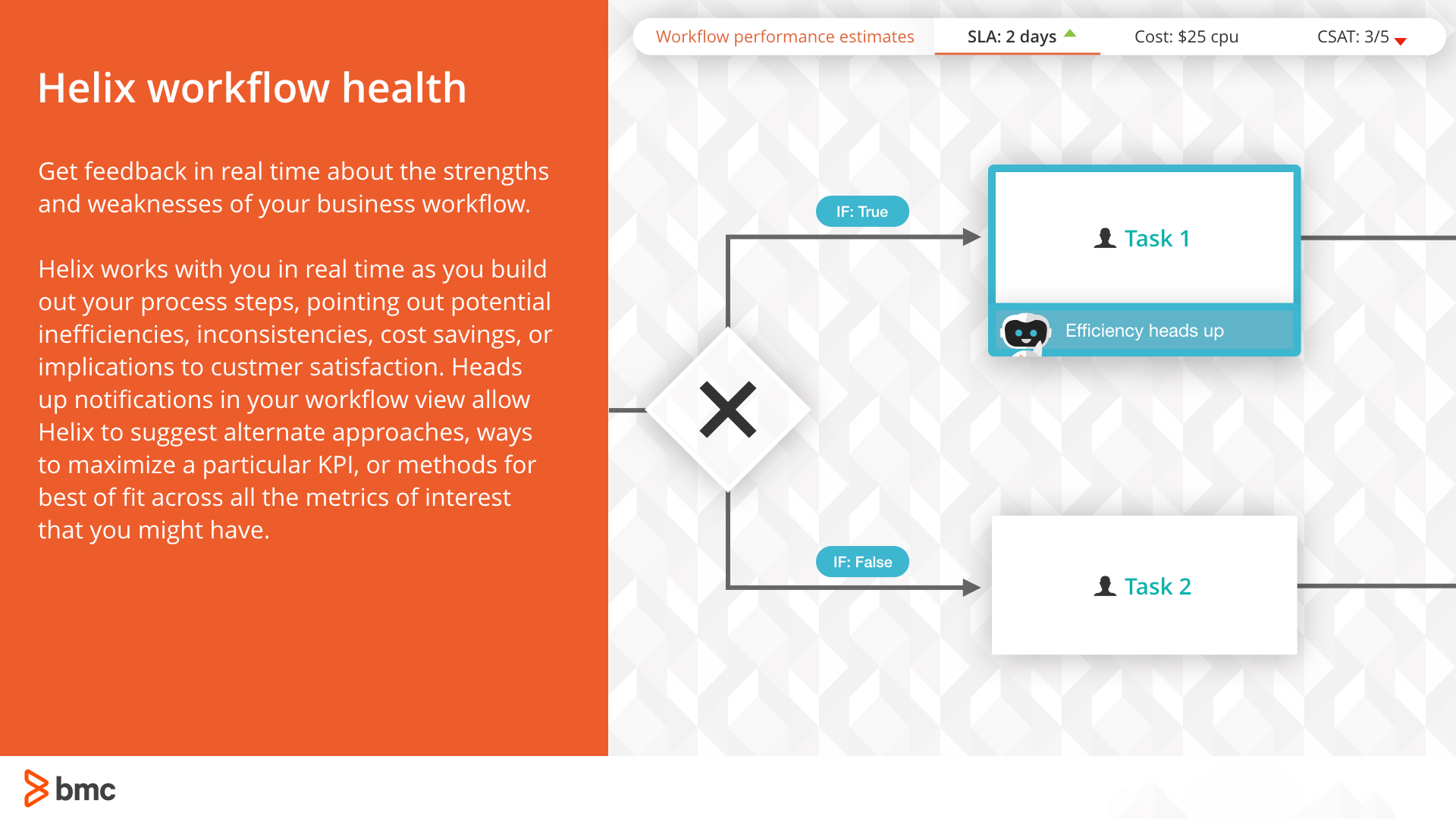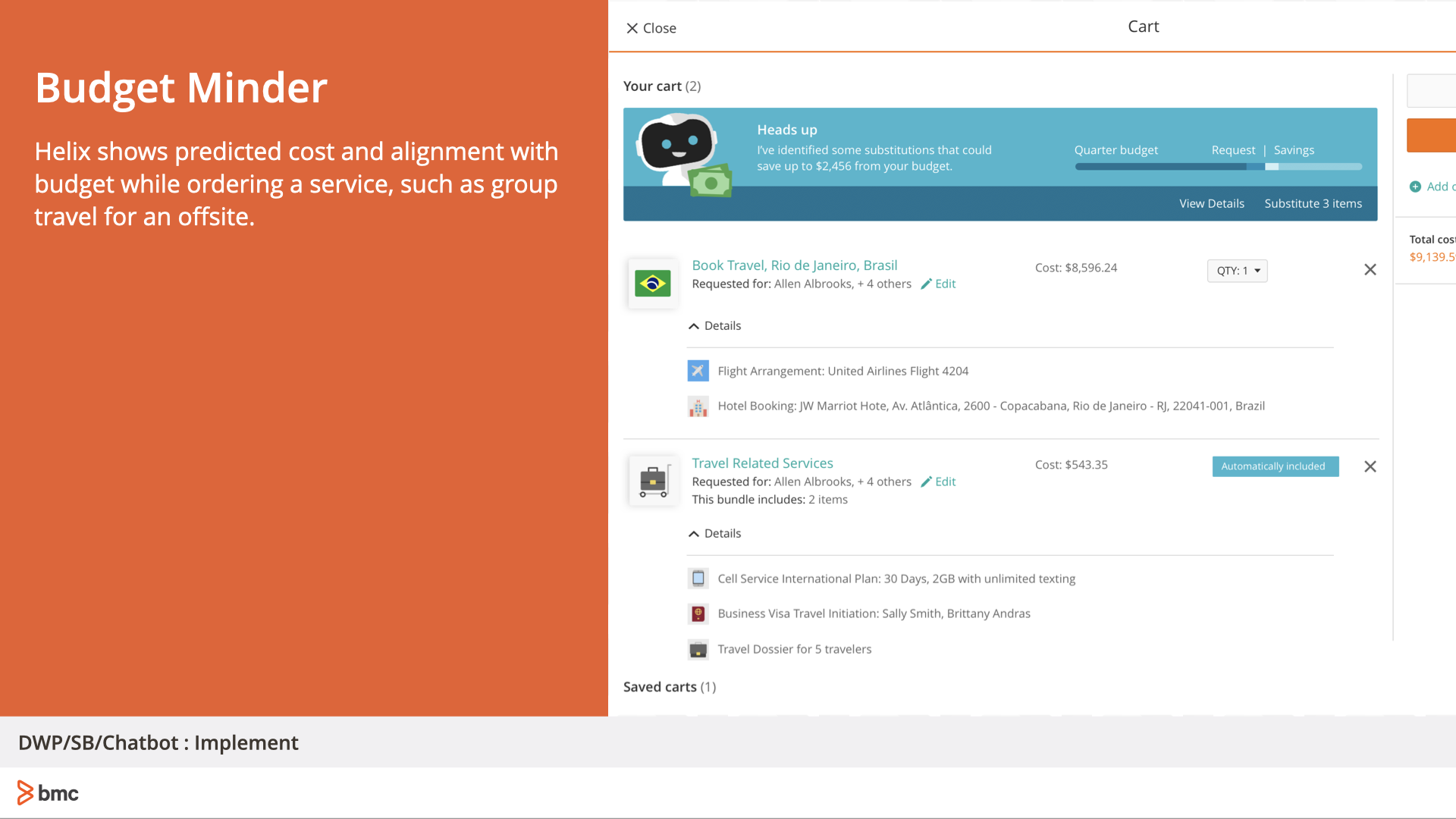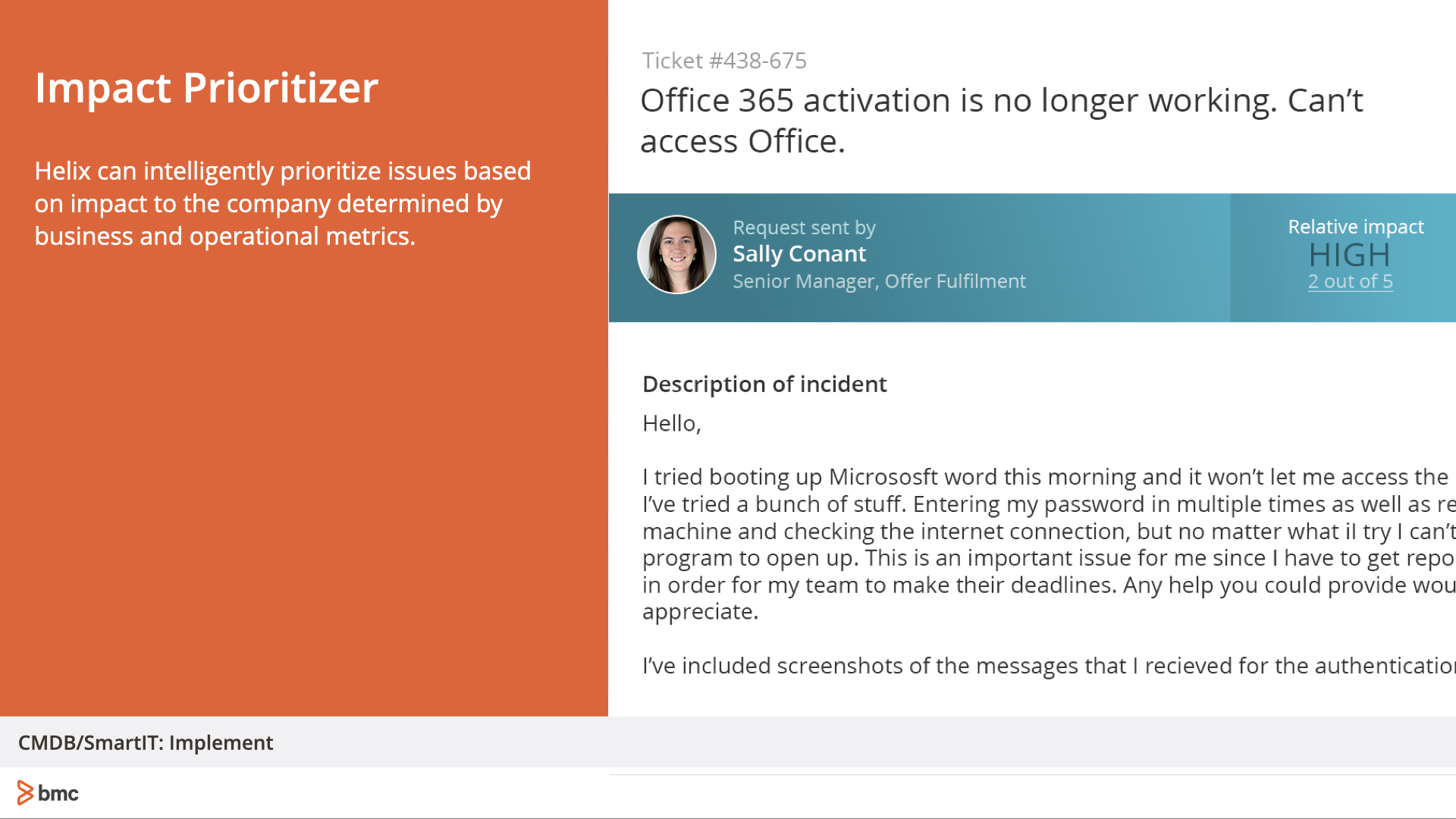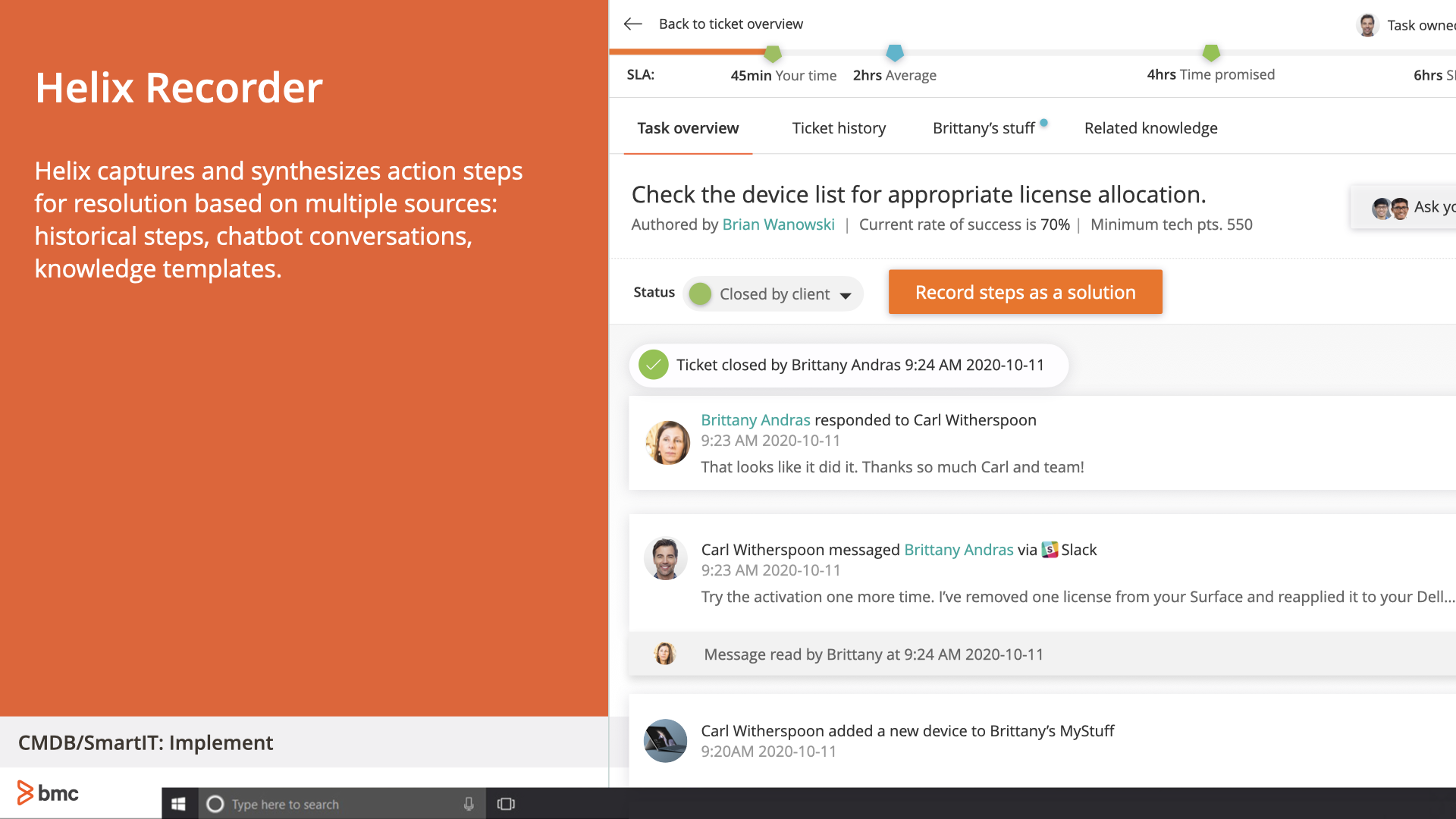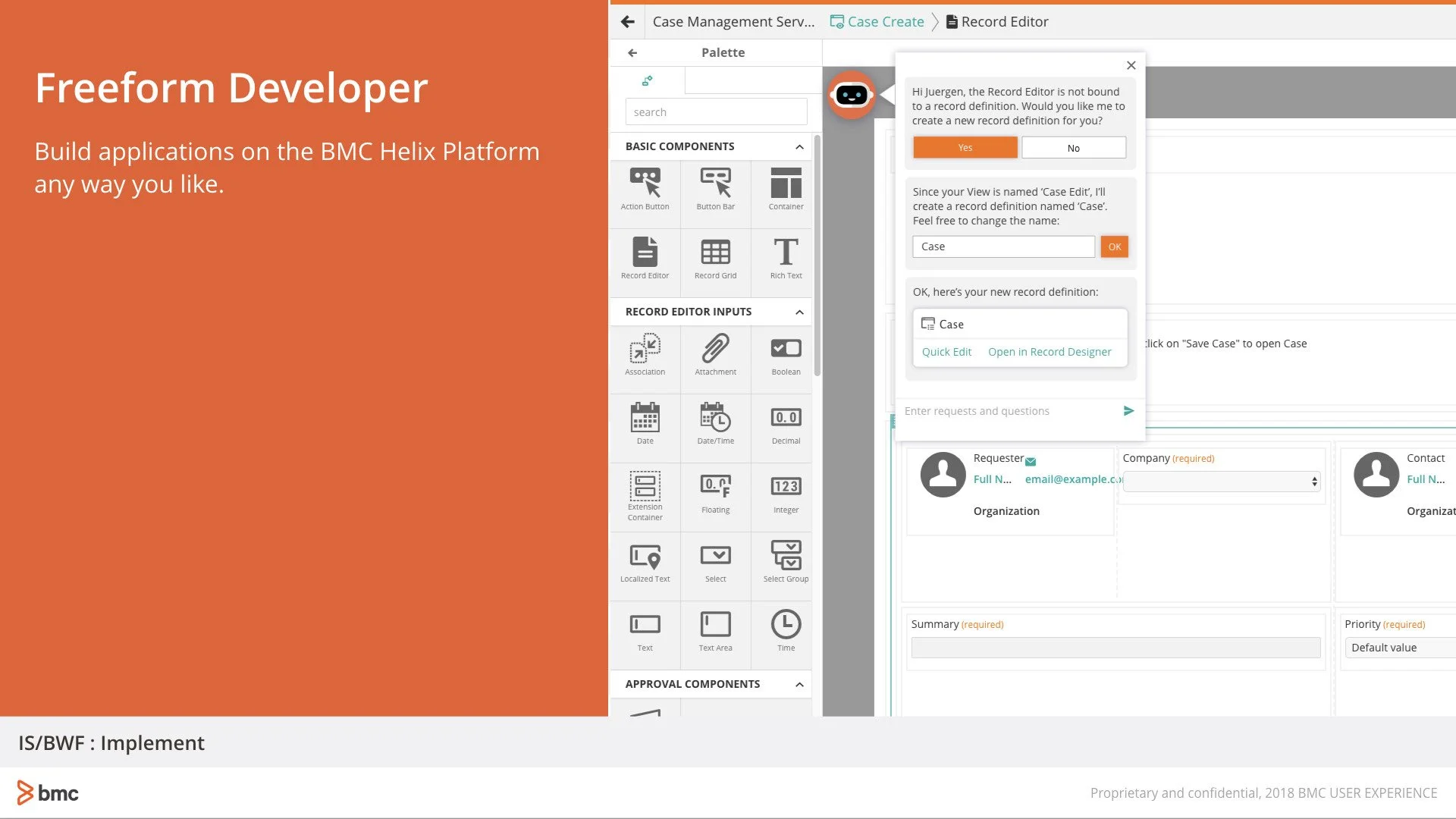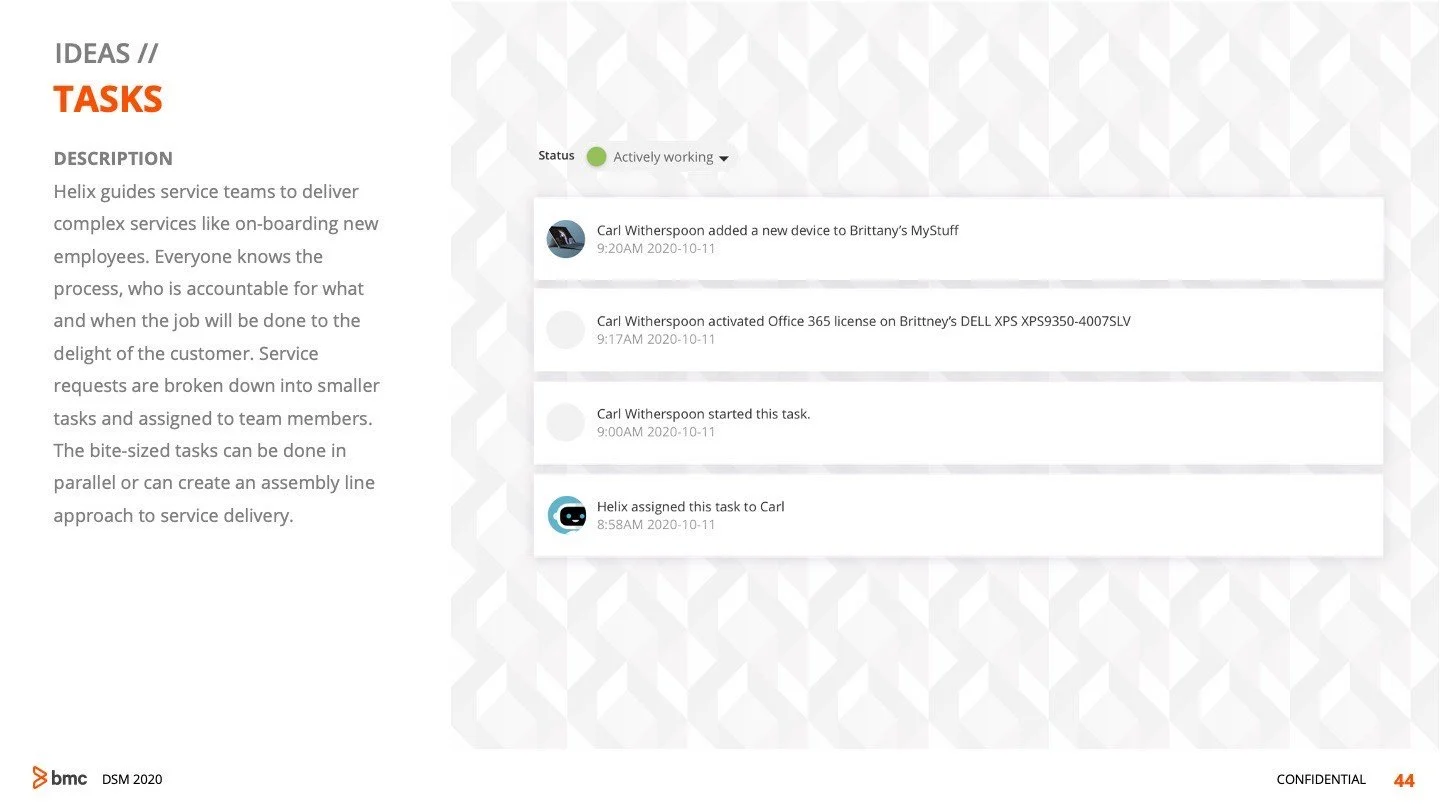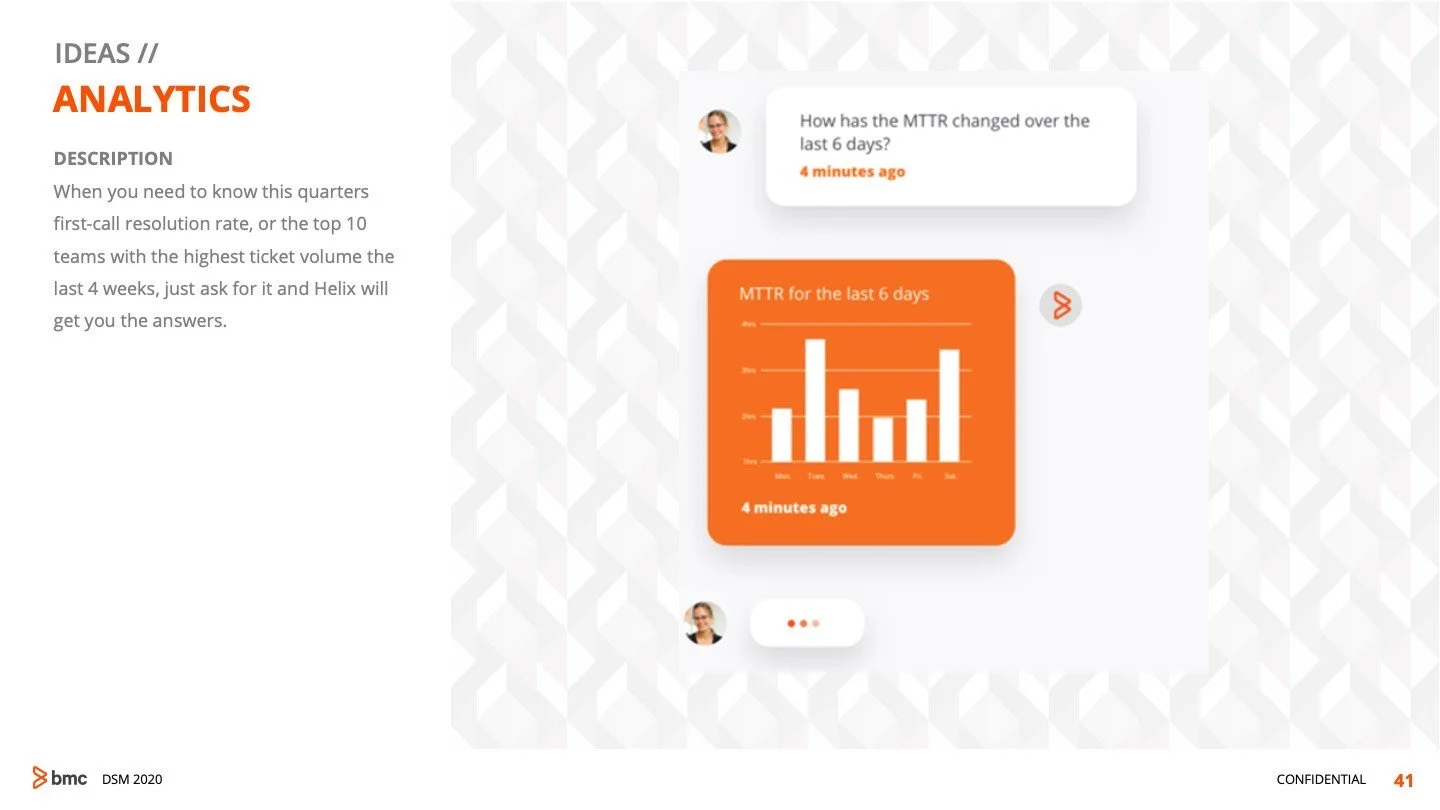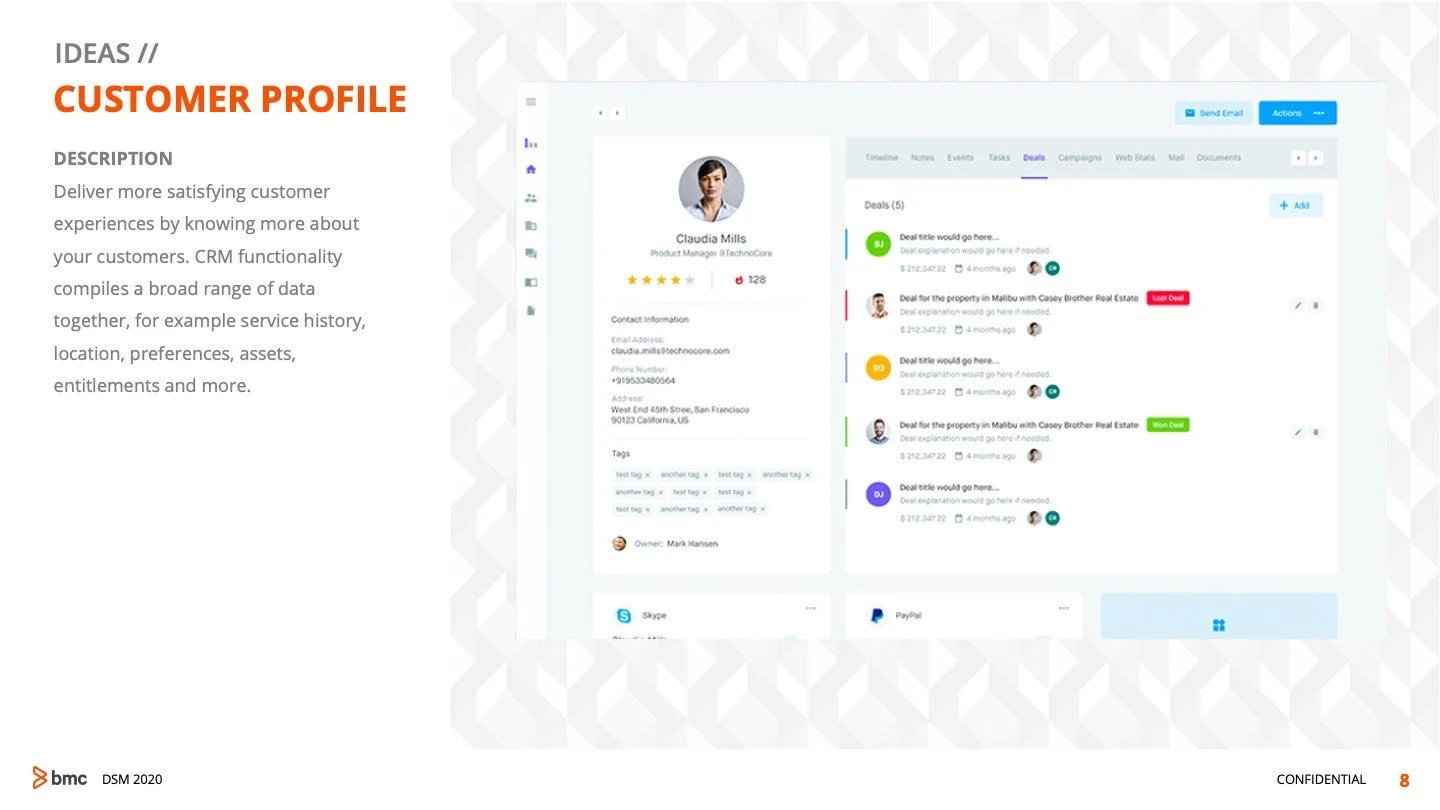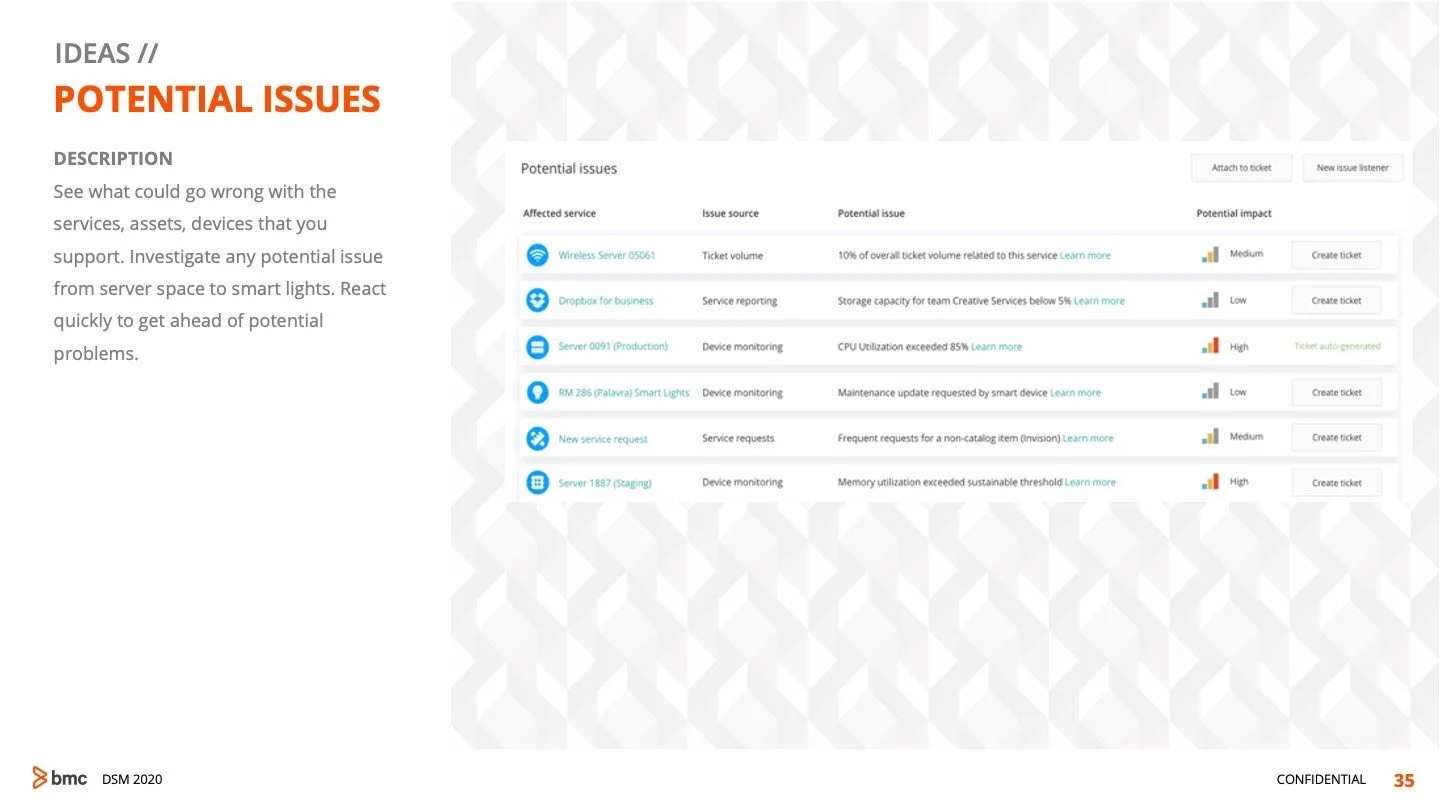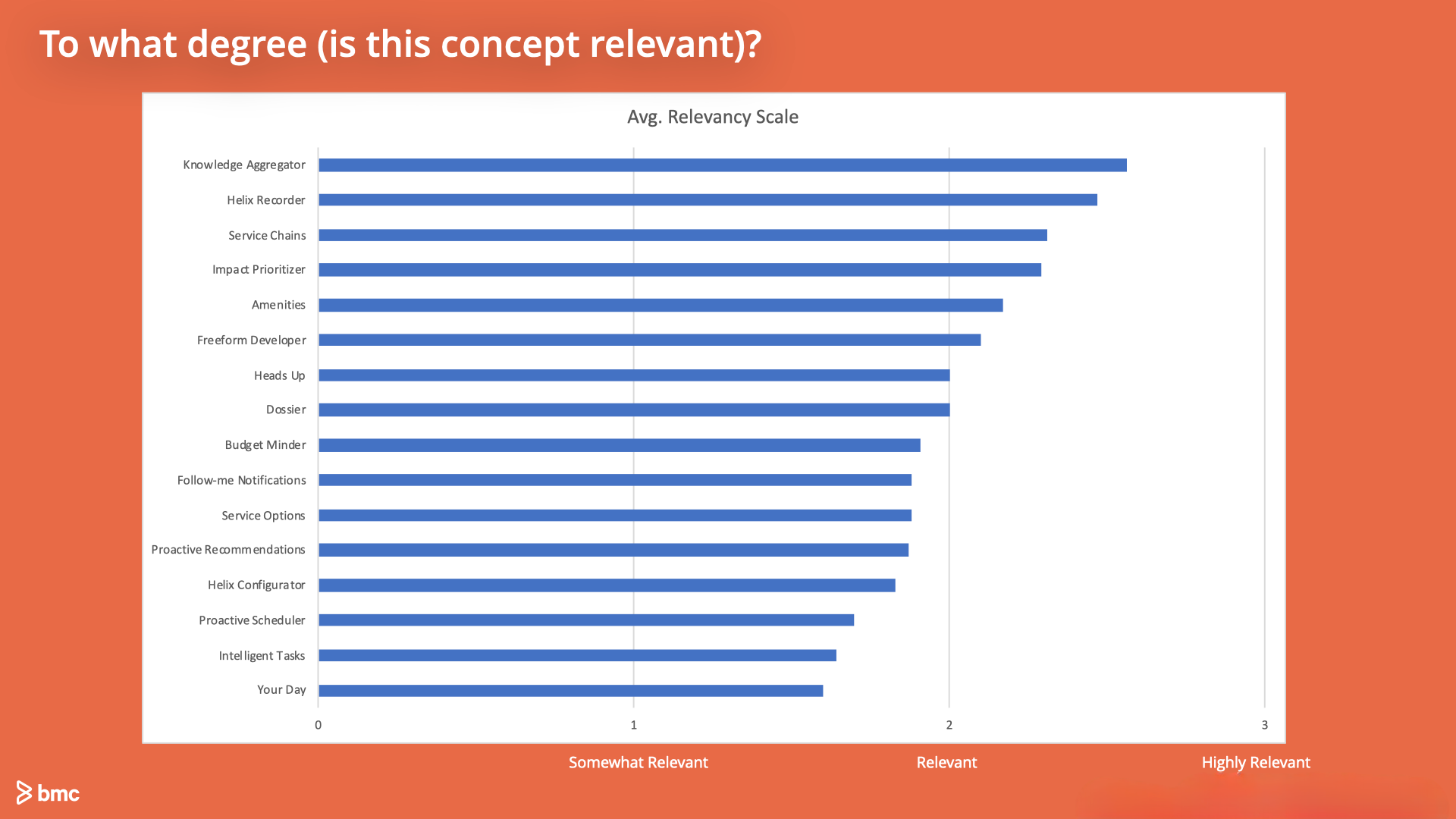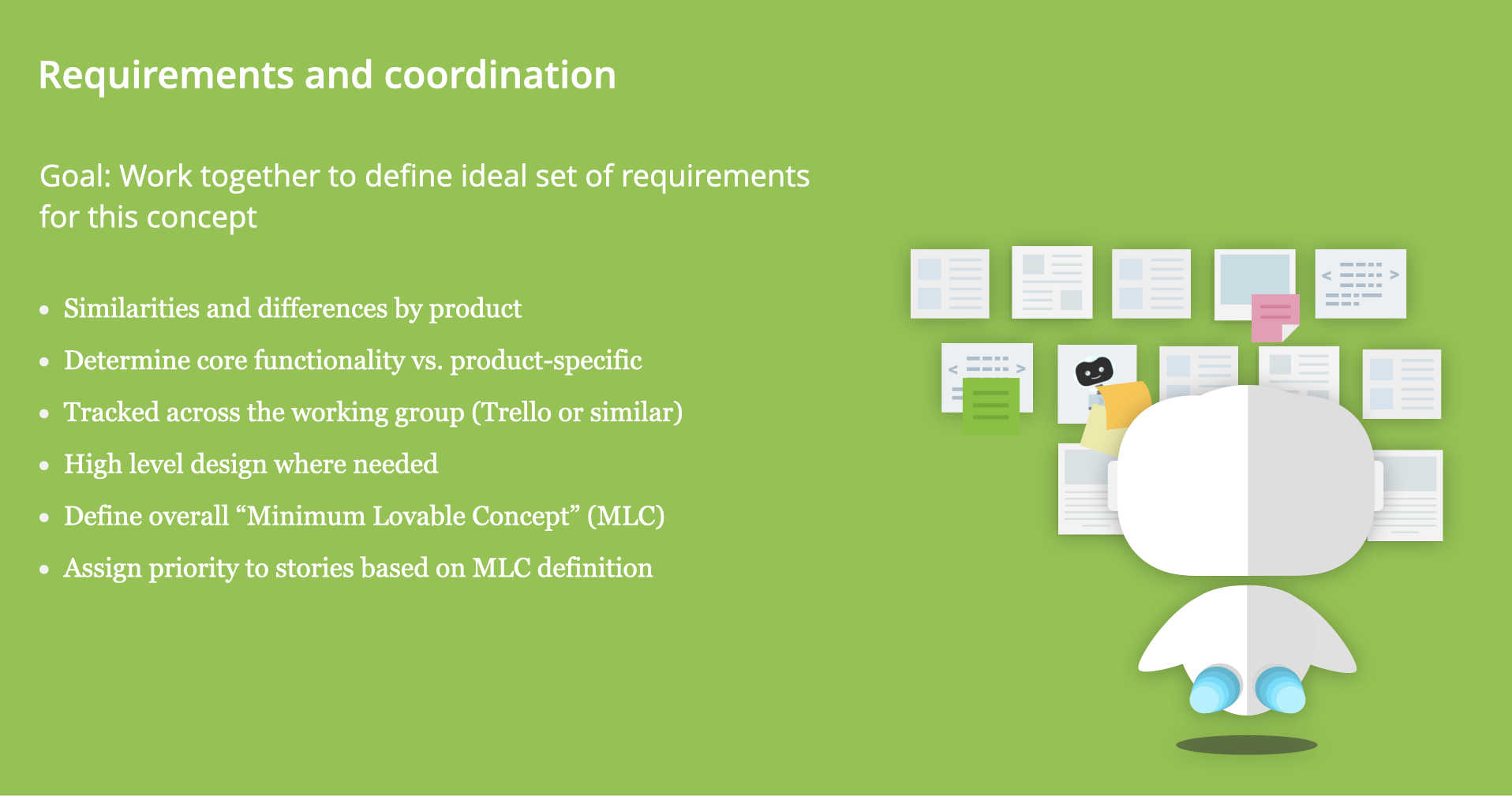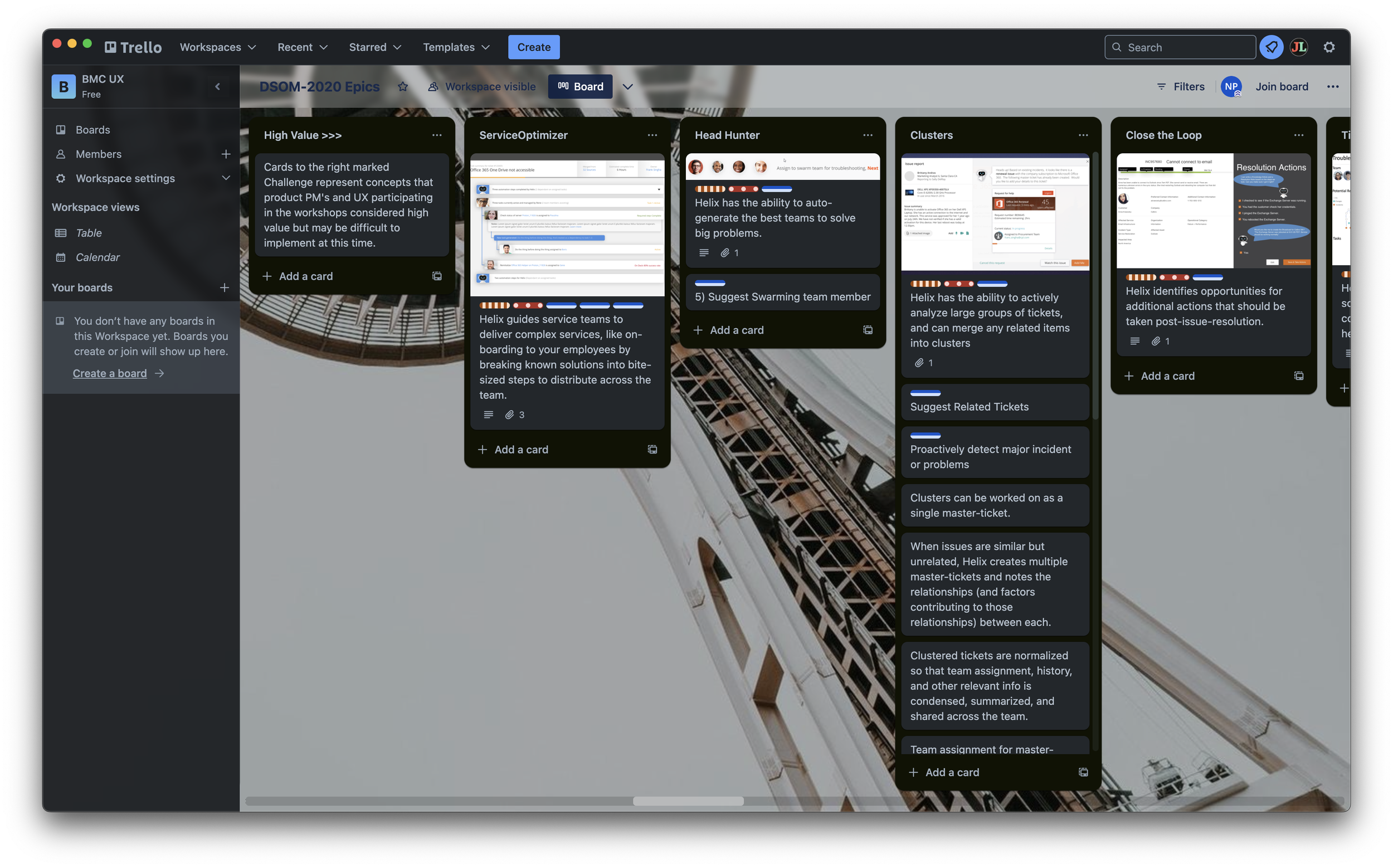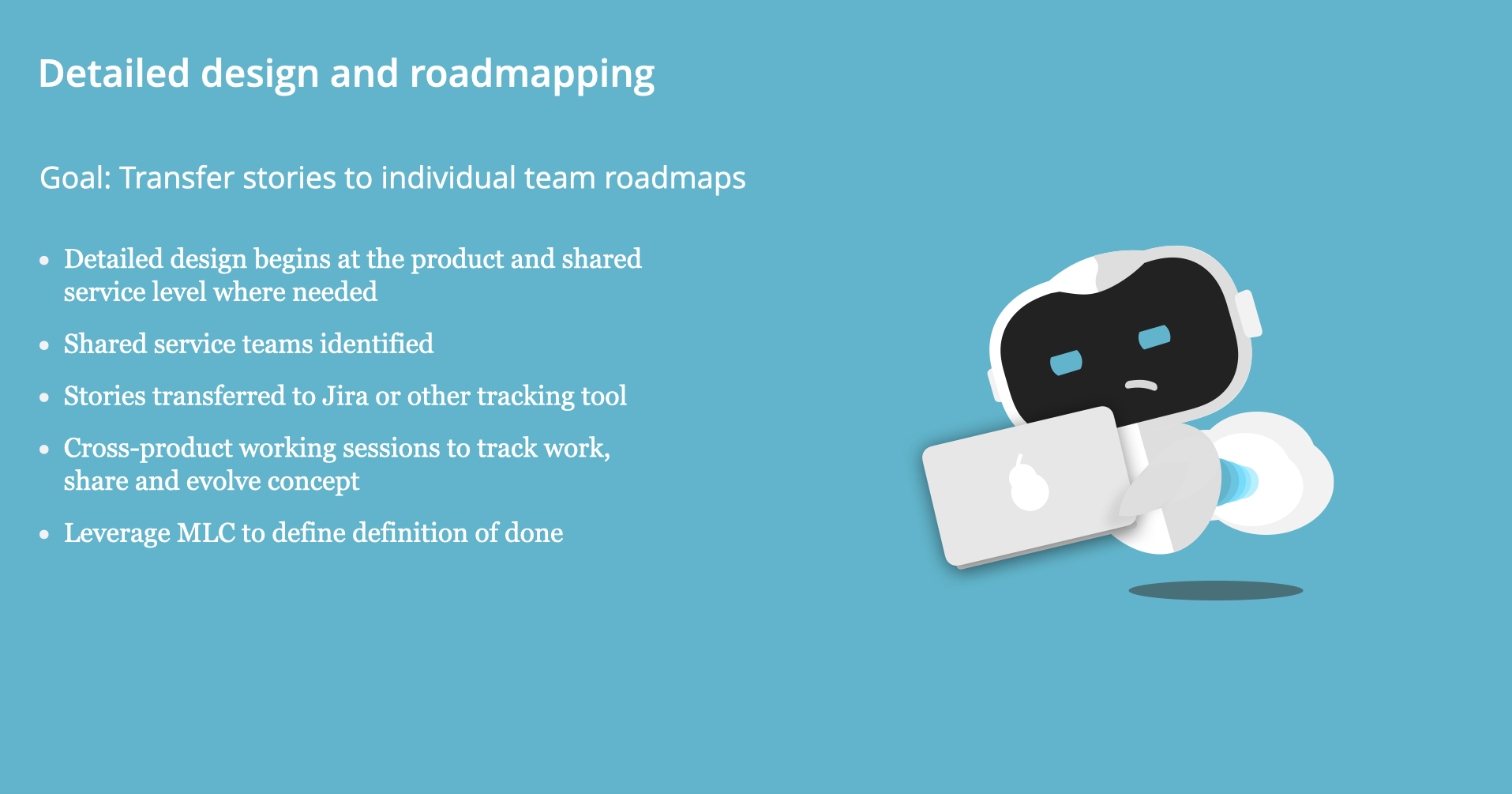Helix
BMC Helix was a large scale project my team took on in 2017, at the request of our division lead for Digital Service Management (DTSM). At the time, the space was visibly on the cusp of a number of shifts; the traditional workforce was turning over and becoming much younger, budget allocations were moving steadily away from personnel, and new technologies, like artificial intelligence, machine learning, and IoT were promising to change the way service desks operated.
To understand these trends more clearly, division leadership charged UX with the goal of both clarifying how and why these shifts were occurring, and to develop an action plan for meeting this changing landscape, long-term and short. My role in the project was to work as part of a cross-functional leadership team, and be primarily in charge of initial strategy, design execution, and planning across the division.
What were we solving for
As mentioned above, the landscape for IT service management was starting to dramatically shift under the feet of many of BMC’s largest customers. Many CIOs and IT departments were experiencing new challenges as a result of changing workforce needs, centralization trends in back-office teams, and new technologies with the potential to change how IT departments operated at scale. On top of this, many departmental budgets were being constrained, rather than expanded, leaving many of our customers in a state of having to figure out how to do more with less.
The UX team was brought in to help, not only make sense of these changes, but to also outline the strategies that would enable BMC to get ahead of them. The team was also on the hook to meet tangible milestones, including the delivery of “intelligent experiences” across all DSM applications in 2018, as well as tactical roadmaps for each product area to commit to as we evolved the concept into 2020.
Research questions
How does the service management organization, including its products, offerings, and services need to shift in order to meet the current changing environment within IT service management?
What does the evolution path from here look like in order to meet these necessary changes?
How does this evolve as we get from one year out, to two, to five?
What does the action plan look like to get us from one of the milestones above to the next?
The work
Foundation (3 weeks)
The team segmented the work into four discreet stages, each focused on specific outcomes and deliverables meant to drive the project forward quickly, and allow for tangible outcomes where possible. The first stage was our foundation stage, and consisted largely of gathering insights from internal leadership, sales, industry analysts, and past projects. The outcomes of these activities provided the team with a strong baseline of knowledge to move forward from, while also exposing gaps that the team would need to fill in our next stage of work.
Discovery (5 weeks)
The second stage of work was about filling in gaps, and checking back on the information we received in the foundation stage. This stage consisted of a couple of different research activities. Firstly, the team set up a series of interviews to discuss expectations with new IT and service desk employees. Secondly, the group ran a series of contextual studies at the sites of some of our biggest customers. Finally, key learnings were translated into vision statements for each area of inquiry; customers, their workers, technology, and organizations (ours and theirs). The outputs from this stage were leveraged as direct inputs into business direction planning, and the design concepting work that would be the focus of the next stage.
Envision (11 weeks)
The envision phase involved translating our learnings from discovery into a fully-fledged concept. The initial phase occurred in two concurrent steps, one being a series of validation exercises with customers on the statements we generated, and the other being the development of a pair of narrative storyboards showing those value statements applied to customer problems uncovered during research. The storyboards went through multiple revisions with customers before getting translated into a series of concept designs, and then a short video, outlining the concept and our first raft of solutions. The team also prepared a series of decks for various stakeholder groups across the organization that delved deeper into the findings, the Helix strategy, and how to execute off of it.
Helix concept video
Helix concept video we developed as a primer for the ideas we generated out of our research. Contains audio
Build (2018 through 2020)
Following a string of participatory design sessions, with both customers and their users, the concepts was considered final enough to move into broader design. This occurred over a few distinct stages, starting with a series of feature workshops. These workshops introduced PMs, designers, and architects to the concept, and then asked them to work in cross-functional teams to develop feature ideas aligned to it. Following the workshop sessions, the team worked specifically with the designers for each group to flesh out their top ideas and define high-level use cases. Those feature statements were then collected in a backlog and run through concept value test sessions with a number of uninitiated customers.
At the end of this process the team had a broad list of Helix-aligned features, prioritized by our customers, and backlogged across the entire organization. The team then held one final group session with architecture and product management to collect initial estimates, refine use cases based on open questions, and rank those features into feasible time frames for delivery. Following the sessions each product had three features they were responsible for in each of the timeframes we were asked to target. Many features fell across multiple teams, thus enforcing the need to integrate efforts across the business unit, as was a key aspect of both the concept and the ask.
Proof of concept work
As feature iteration was occurring across the UX organization, the core team was asked to partner more closely with a couple of teams to help develop a handful of POCs for various business objectives. The POCs covered a number of needs, including things like business development, sales and marketing, and new product concepts.
Proof of concept for a chatbot-based PC refresh scenario, used largely for sales. Because of the context, the team was asked to go a bit heavier on the inclusion of the Helix character.
Proof of concept for a revised integration studio application, leveraging some of the core smart integration ideas that came out of the workshops. This was meant to serve as a starting point for ideation heading into detailed design.

Outcomes
In total, the Helix project produced 44 major feature concepts affecting the entirety of the DSM catalog, as well as 77 smaller features identified as gaps or opportunities during the discovery and envision phase of the project. Each one of these features was cataloged, fleshed out with requirements, and outlined in design before being ported over into each product team’s individual Jira instance. From a commitment perspective, each participating team was able to complete their required features within the first year of the concept rollout, for a total of 6 major Helix features being released within and across teams. Furthermore, teams were also able to close 24 of the original 77 smaller feature requests by the end of 2018. Anecdotal feedback from sales estimated that at least 28 major deals or renewals were closed between 2018 and 2022 as a result of Helix functionality, including partnerships with Ford, Ericsson, and Darden Restaurants.
Helix features ended up having an outsized affect on our observability and ticketing products, with some customers able to achieve large reductions in outage, MTTR, and issue resolution times. In 2020, BMC Helix became the brand moniker for all data-driven ITSM products and services within the DSM division. In 2024, BMC Helix was spun off of BMC as a separate entity, focusing on innovation in data, automation, and AI with in the IT Service management space.
Summary
Tangible outcomes
Forty-four major concepts with initial design, broken down and ported into DSM roadmaps
Six major cross-product concepts launched across DSM in the first year
Seventy-seven individual helix features outlined and sent to product backlogs
Twenty-four individual features closed by the end of 2018
At least 28 major deals and renewals closed resulting from Helix features in 2019-2020
Helix observability features linked to 76% increase in service health, 60% reduction in MTTR, and a 64% reduction in outages
Helix recorder and digital workplace features allowed some customers to get to 90% root cause identification and see a 65% reduction in issue resolution time
Impact
BMC Helix ITSM considered a leader in IT service management in Gartner’s 2020 Magic Quadrant
Helix concept became the major theme of Exchange 2021, BMC’s user conference
Helix is now a major platform within the ITSM business
Major features still releasing, as mandated, for each product area, as of 2021
Helix features drove major updates to dynamic service modeling, automated remediation, chatbot/virtual agent, and issue reporting
Ten Helix-based components and services released to the organization as building blocks via ADAPT as of 2021
BMC Helix transitioned to a separate entity, spinning off of BMC as it’s own company, as of 2024
